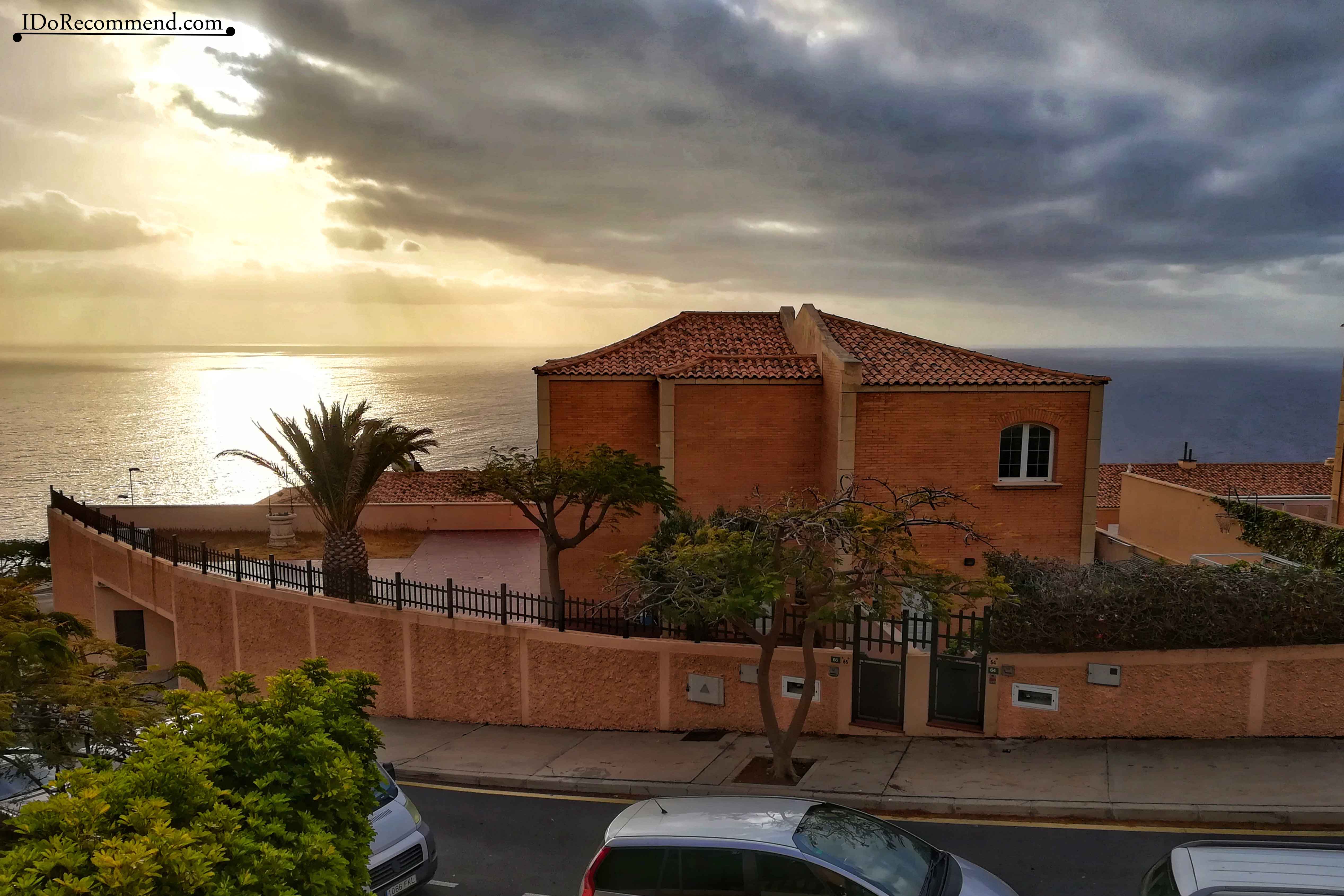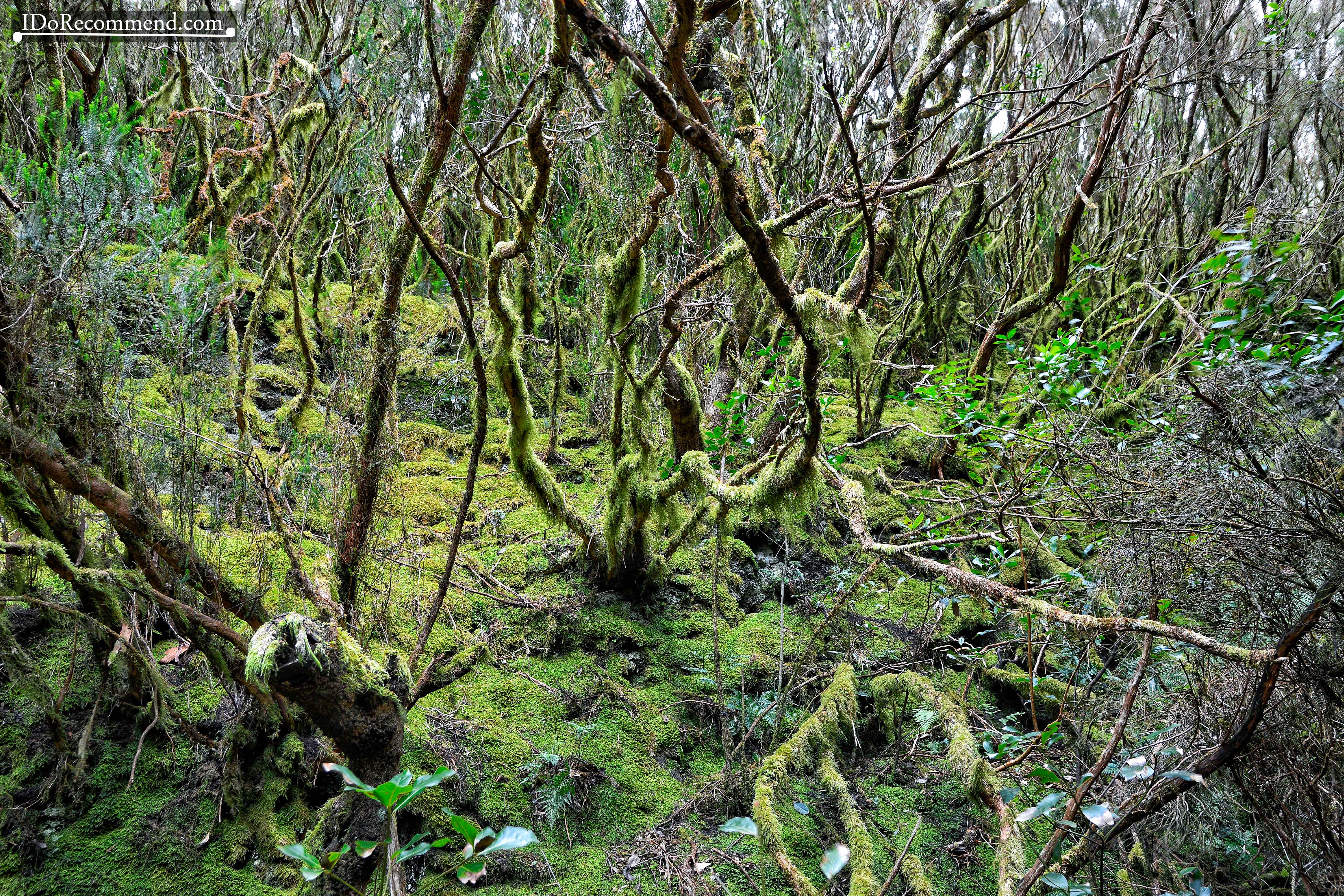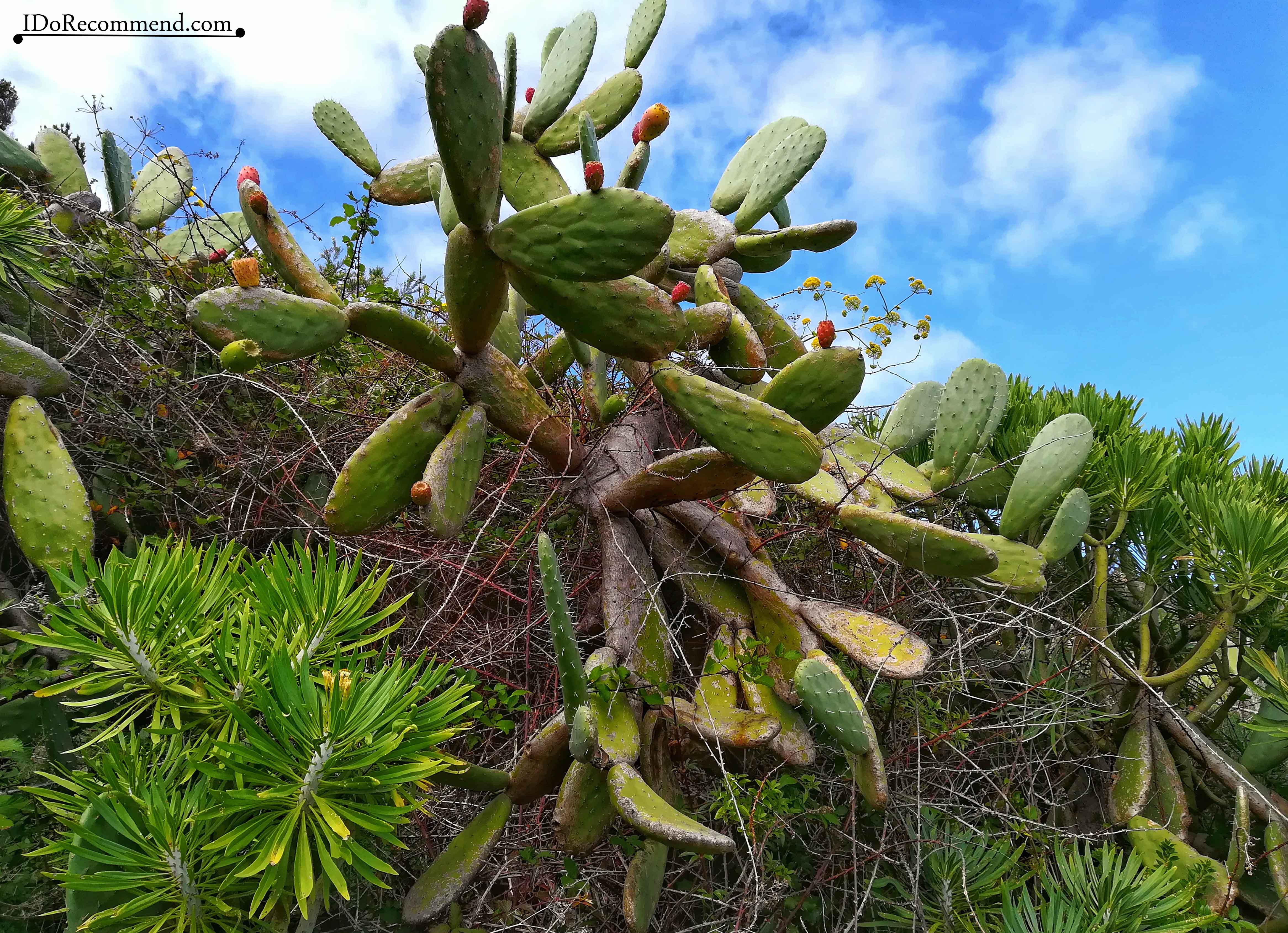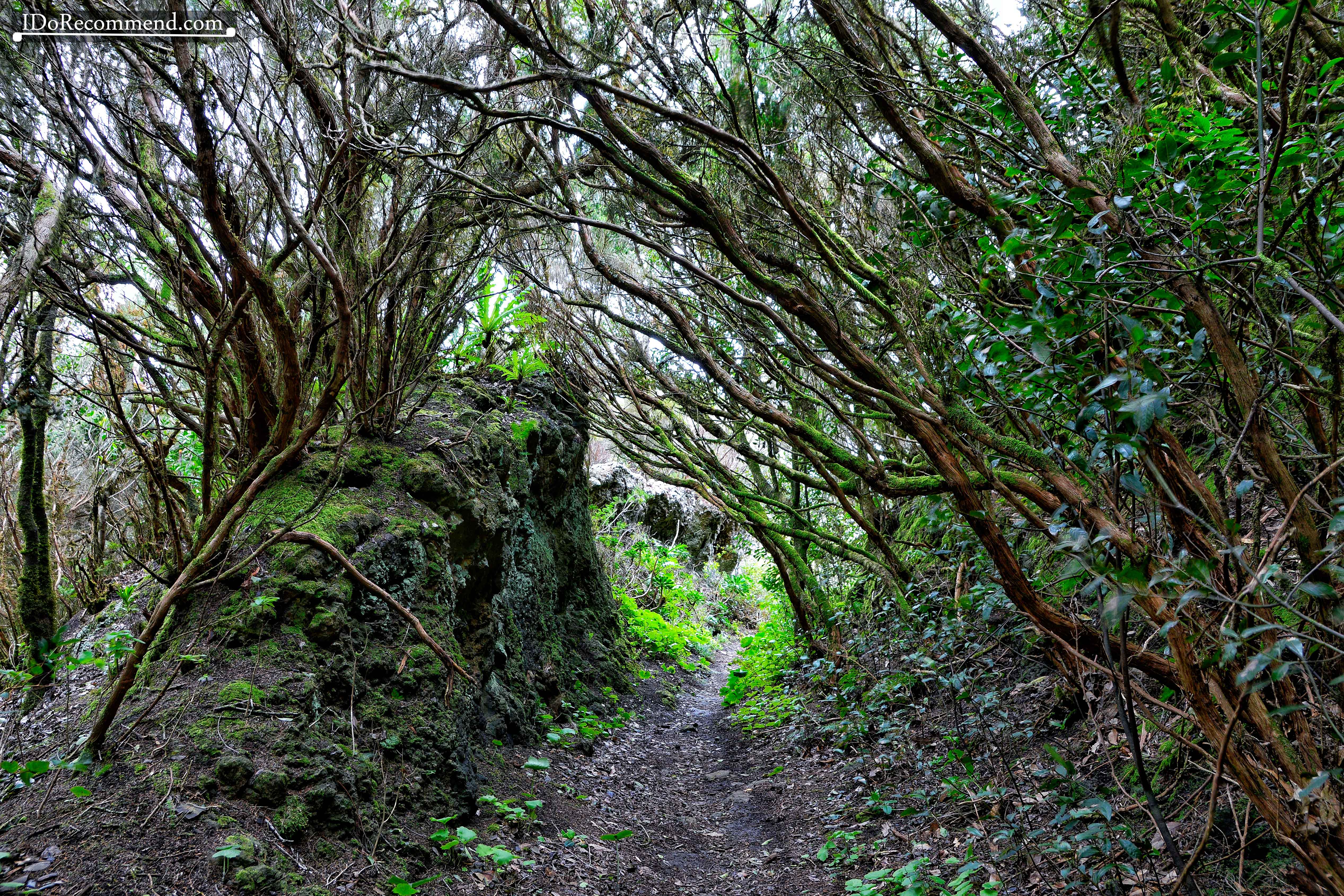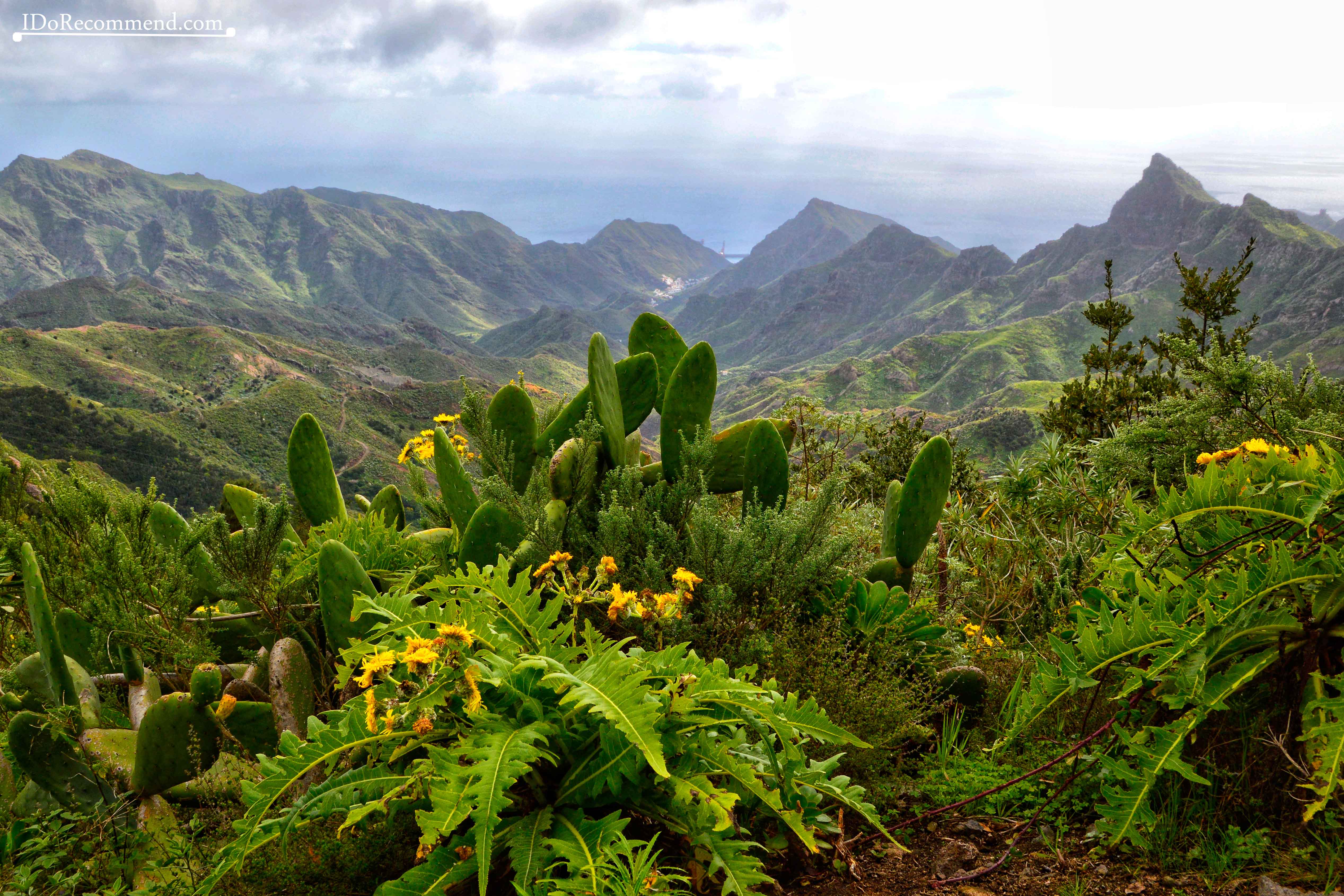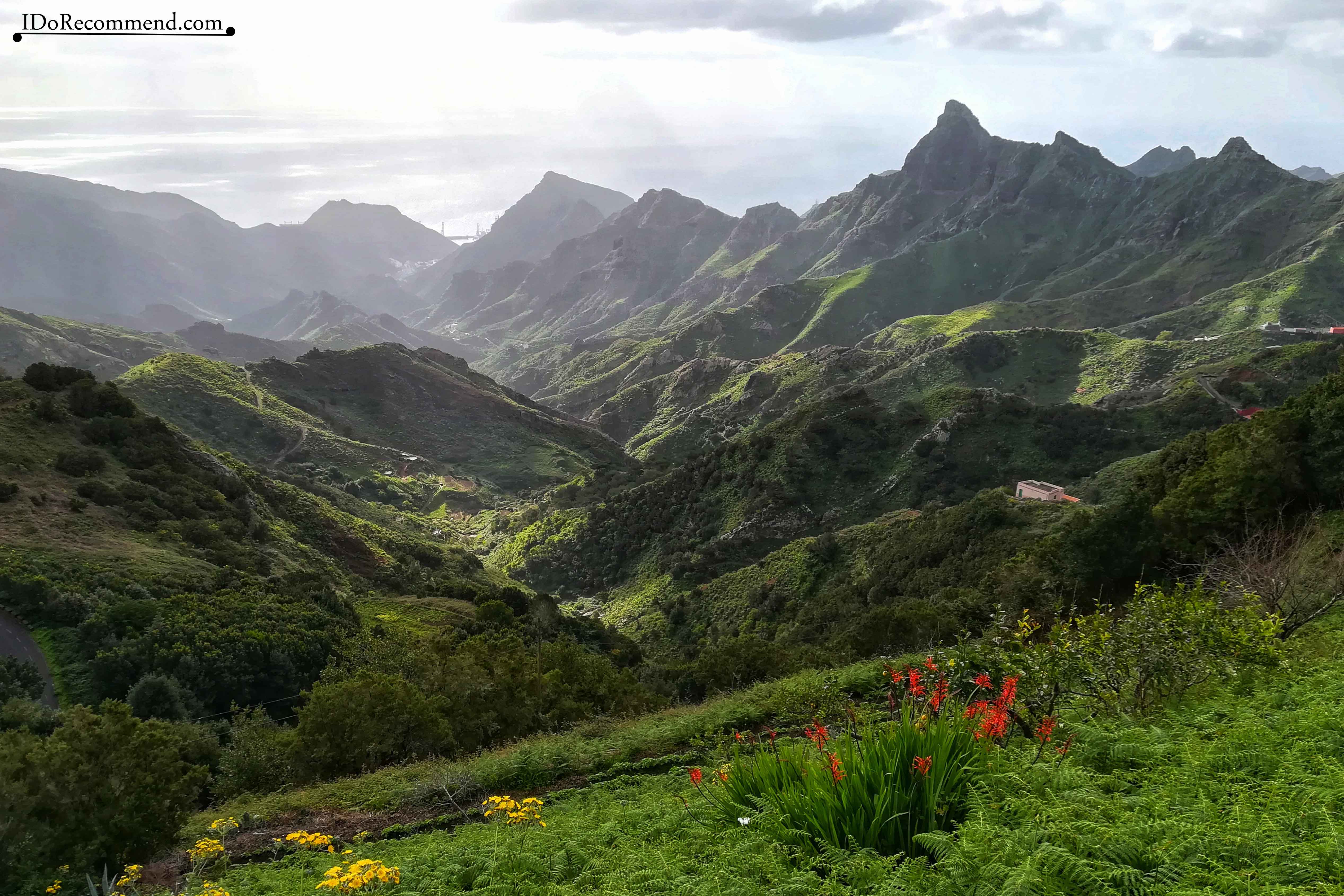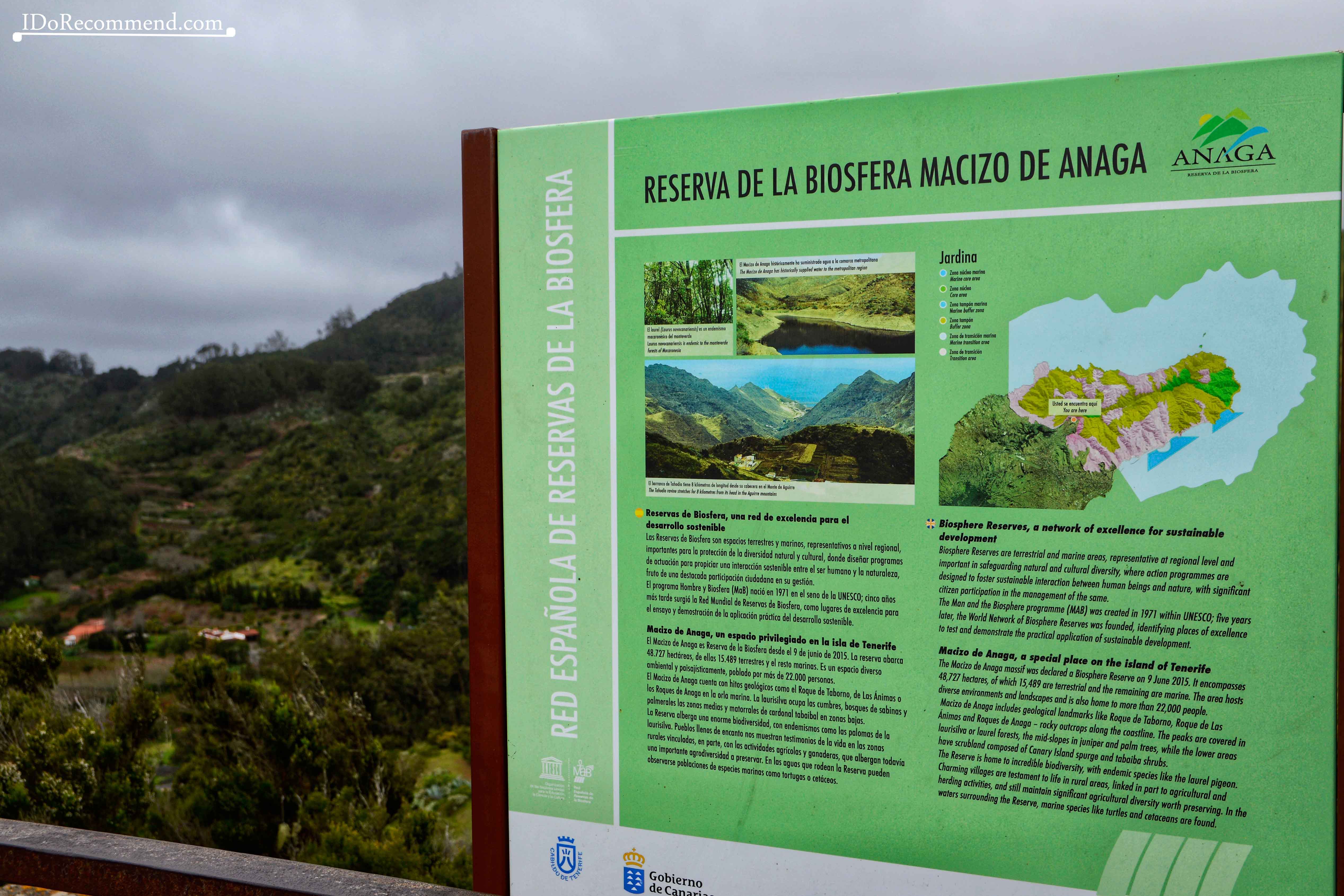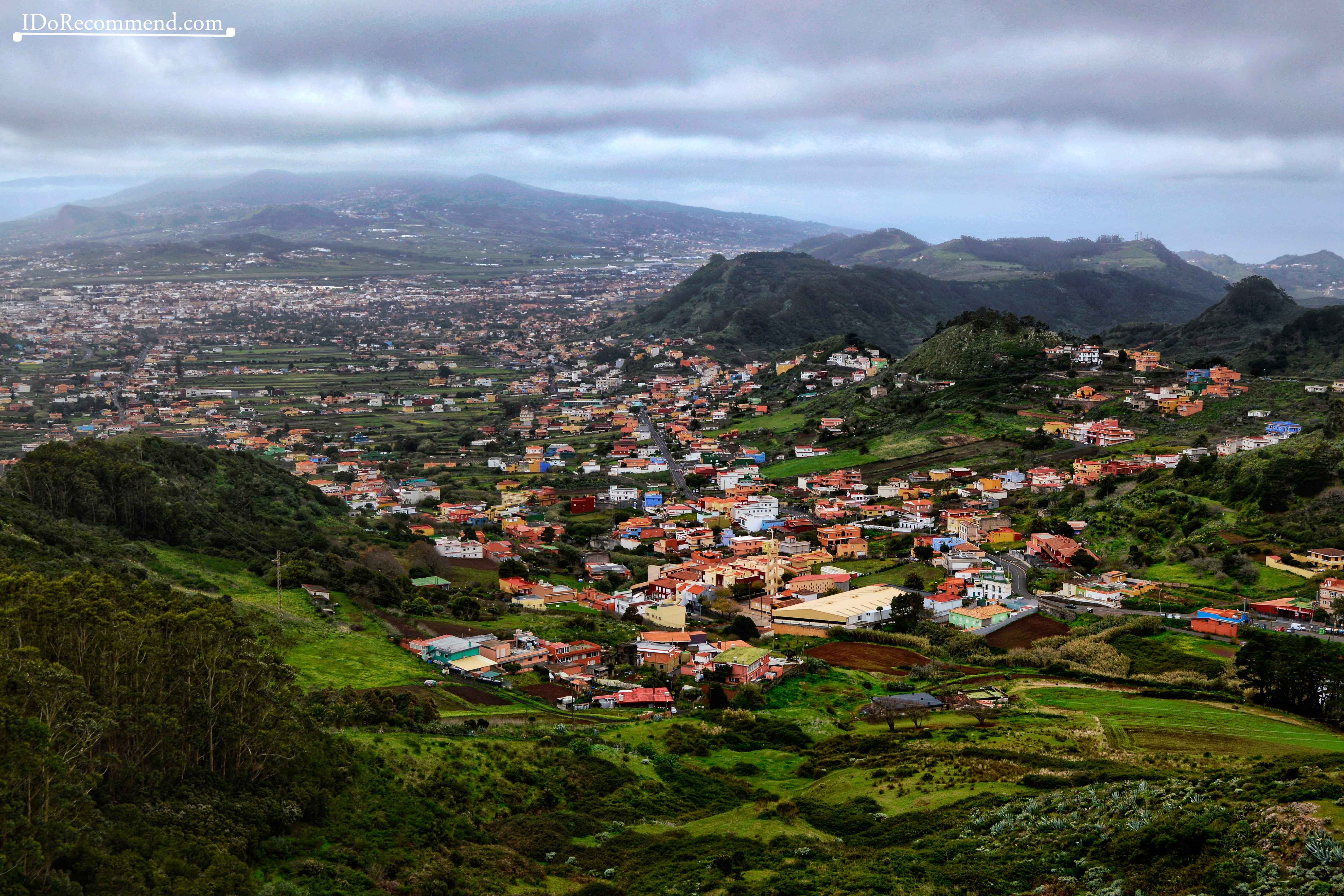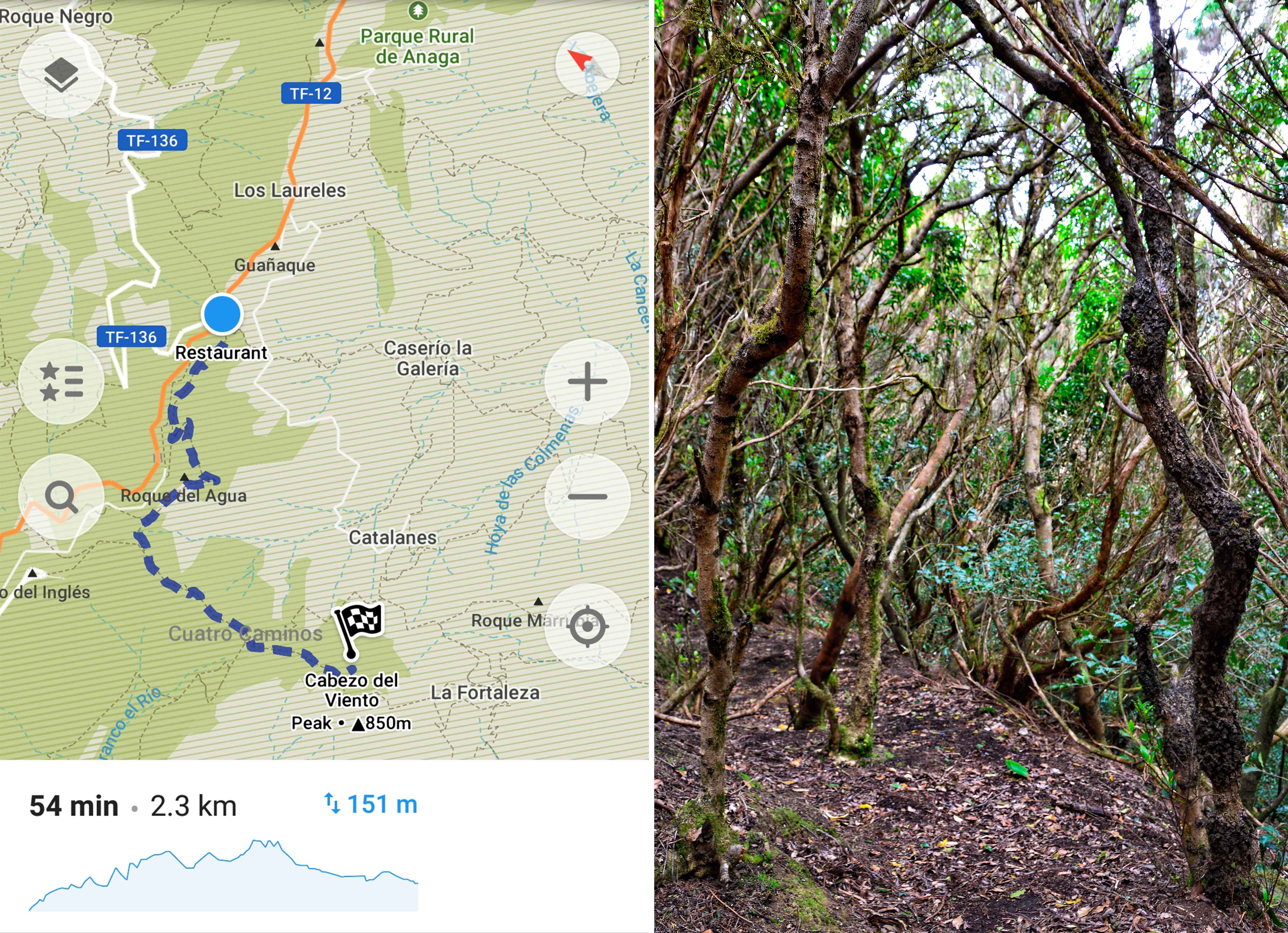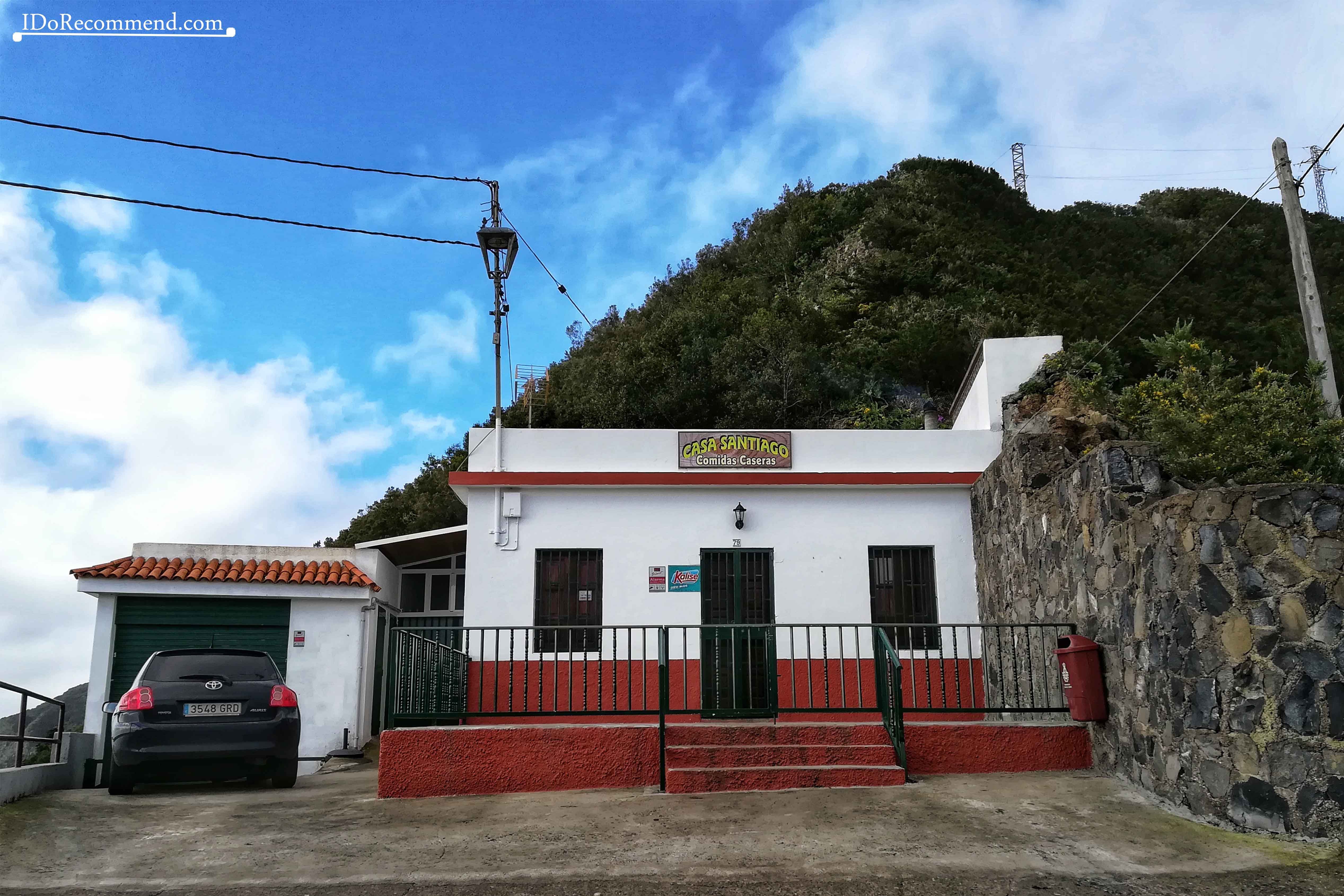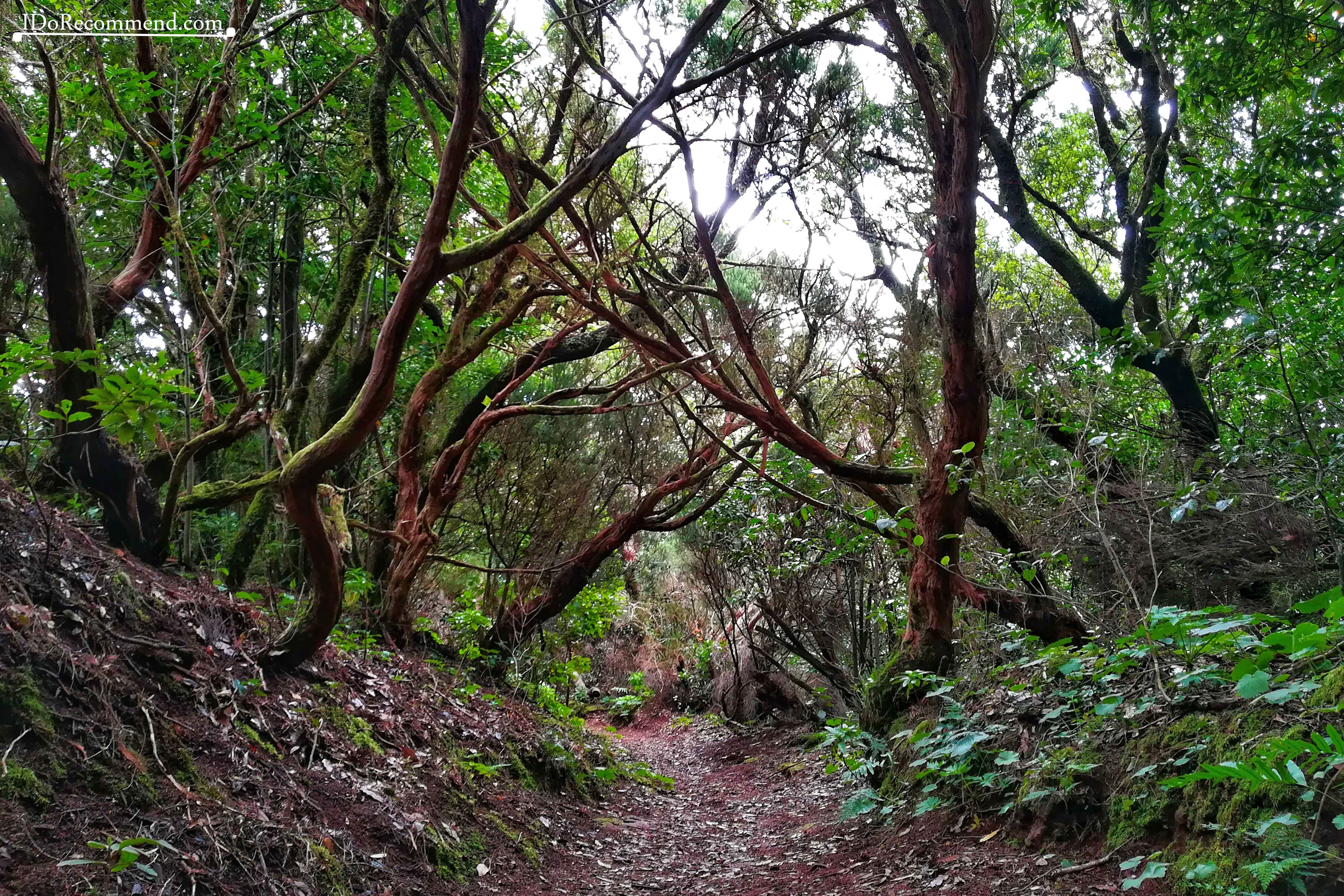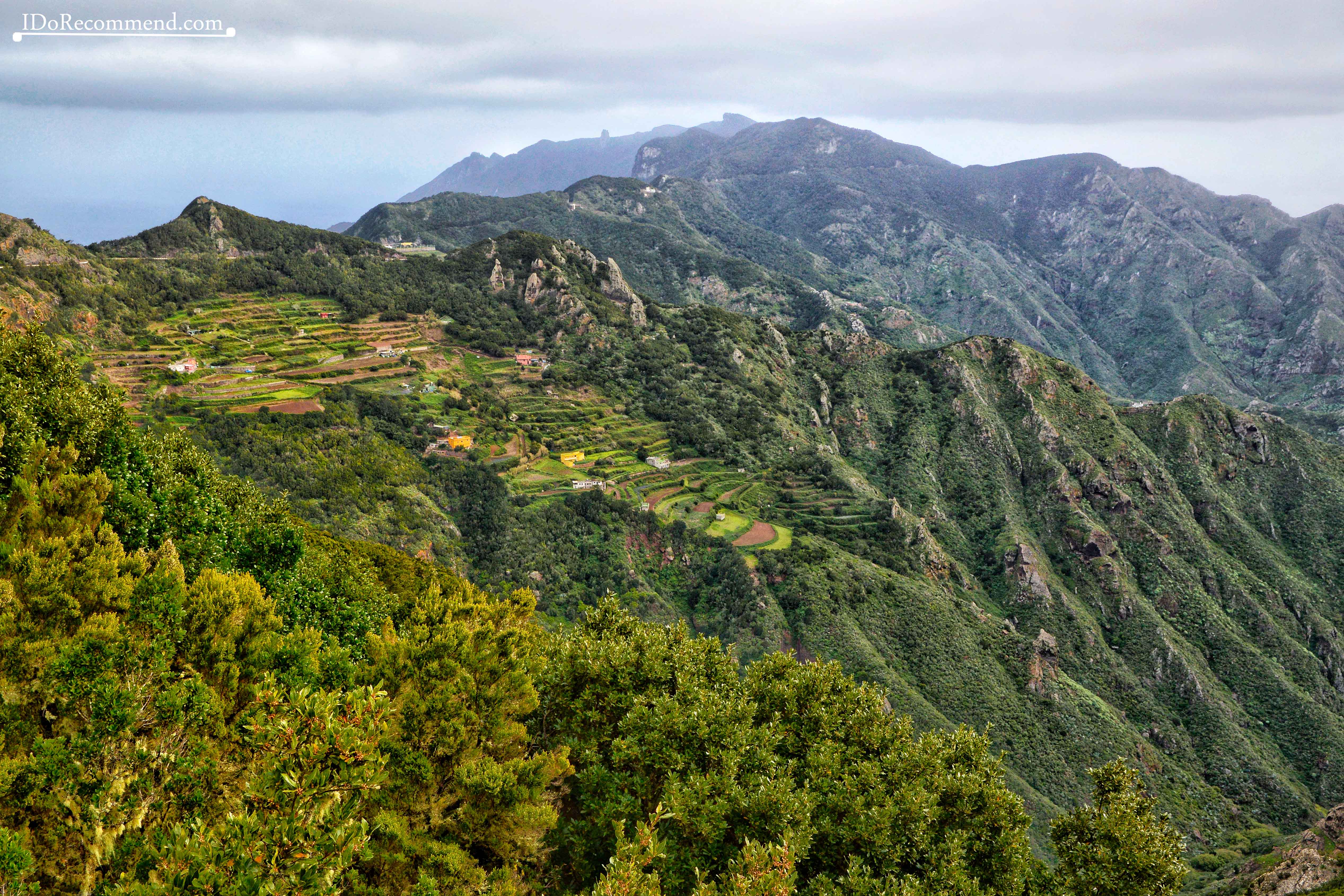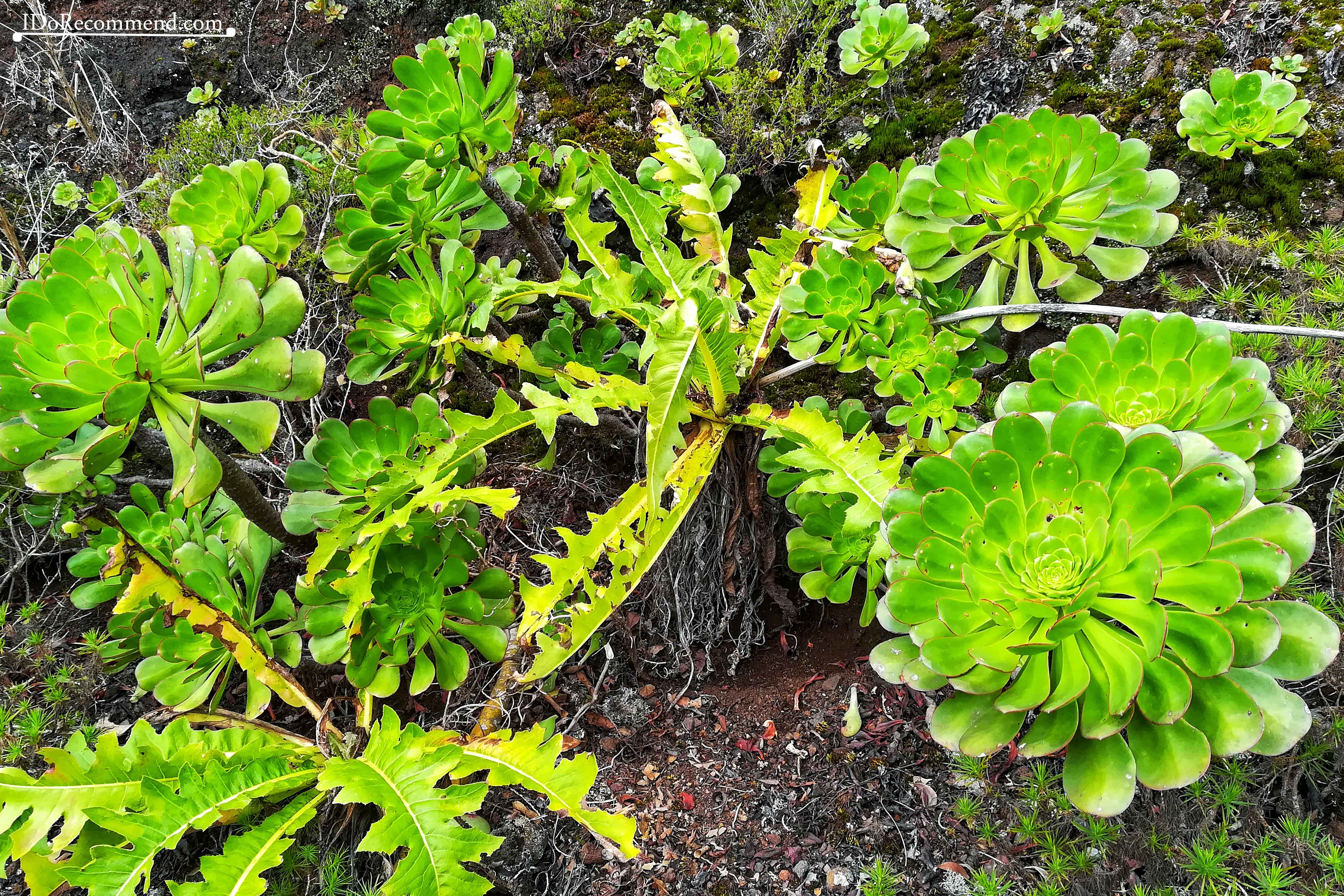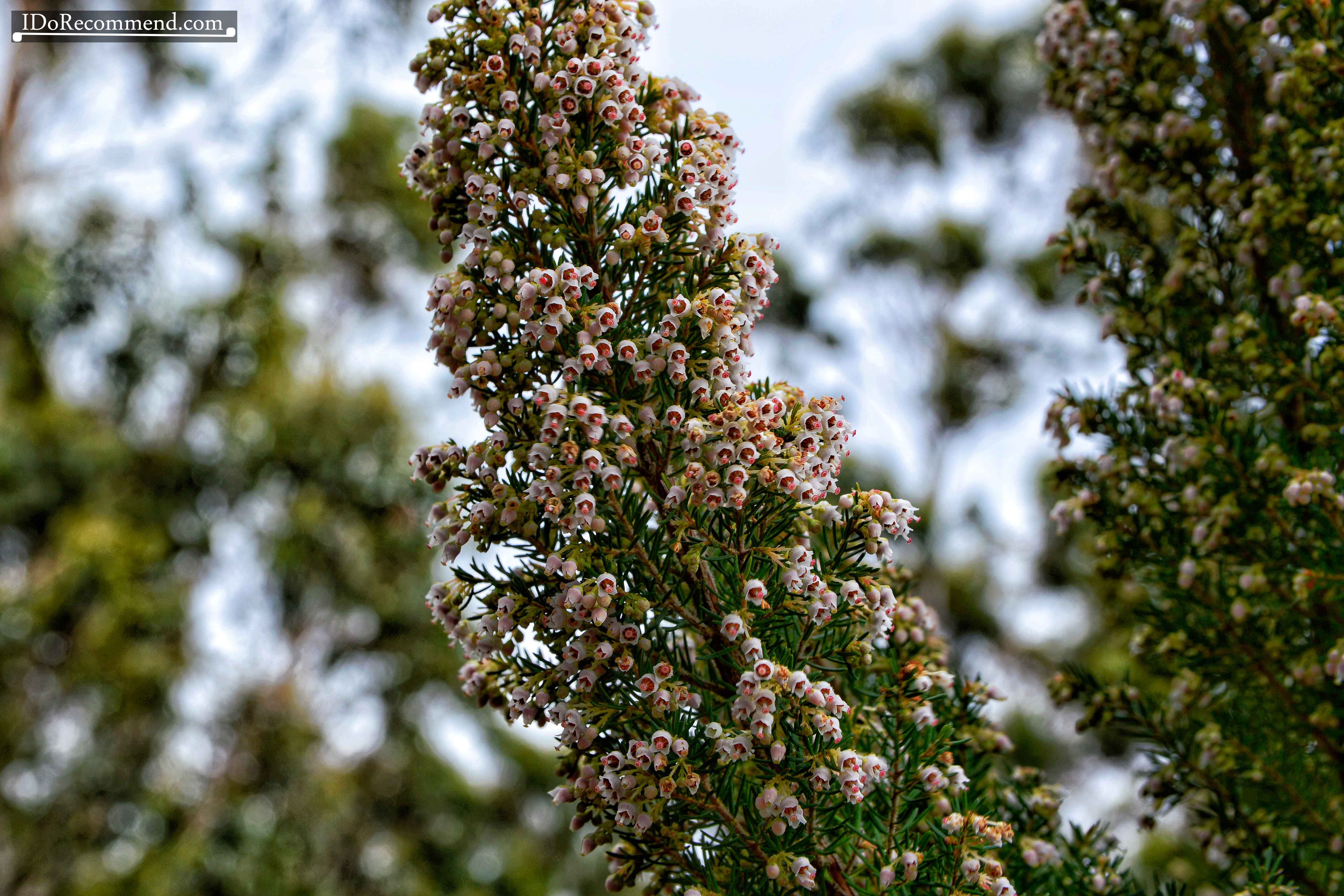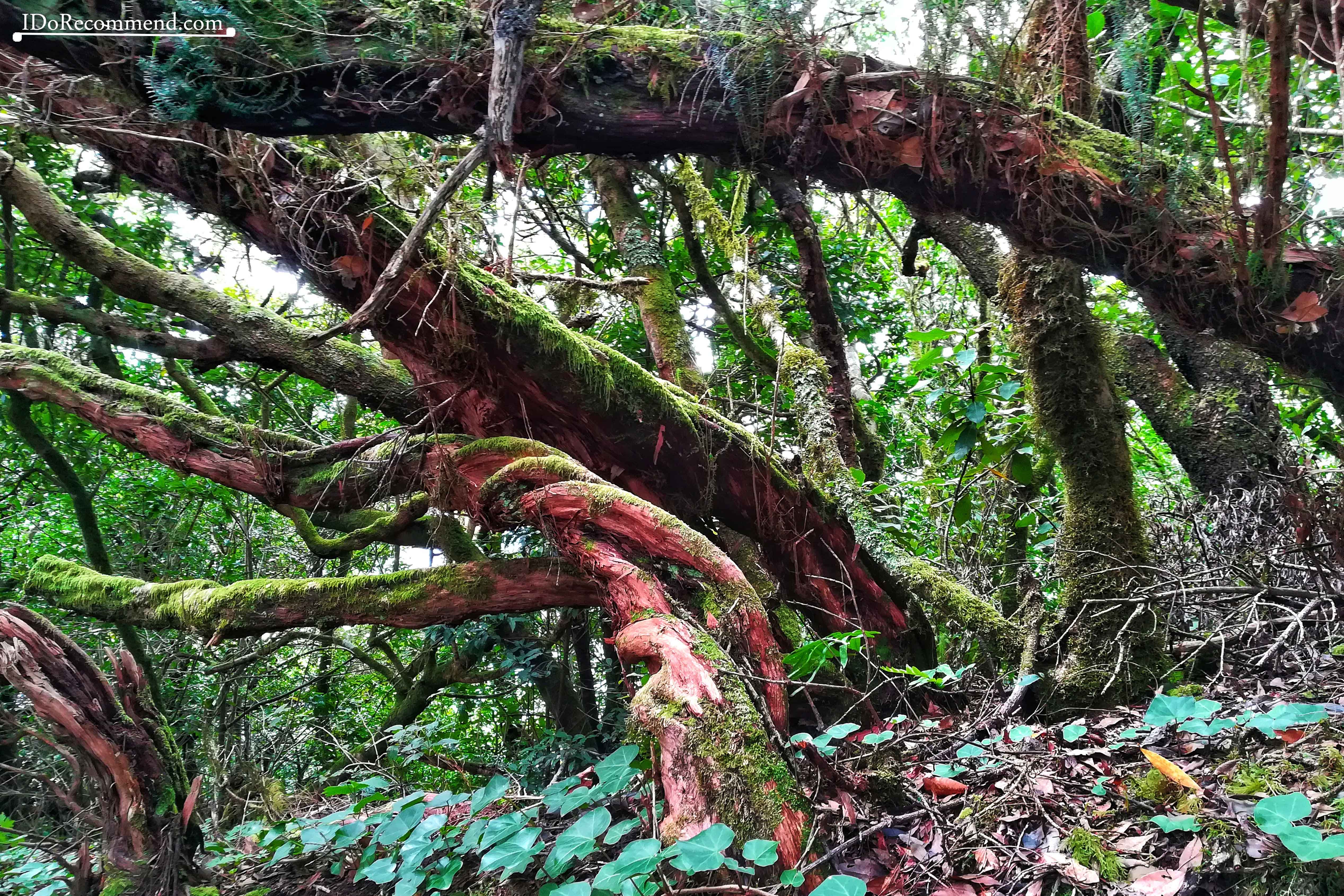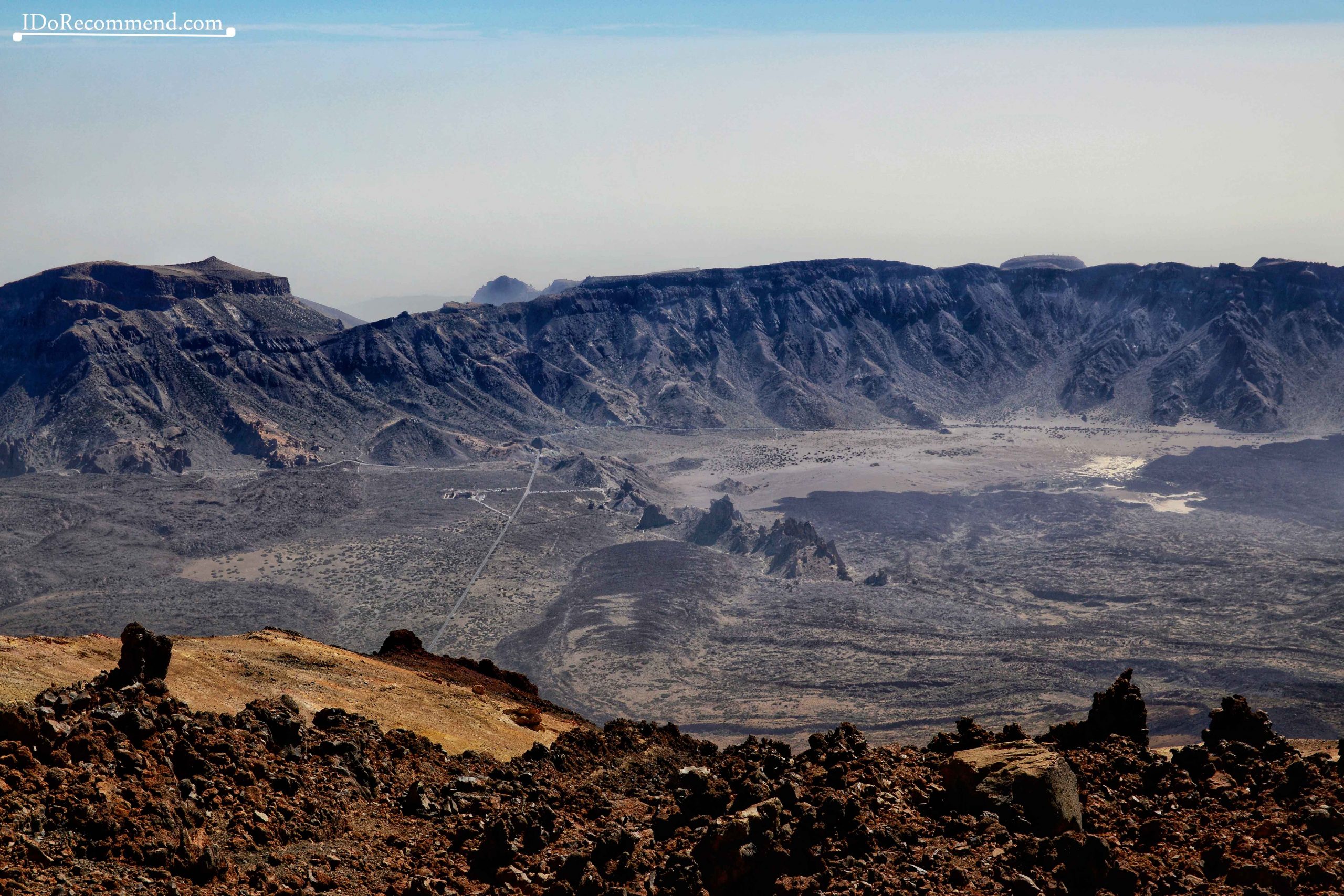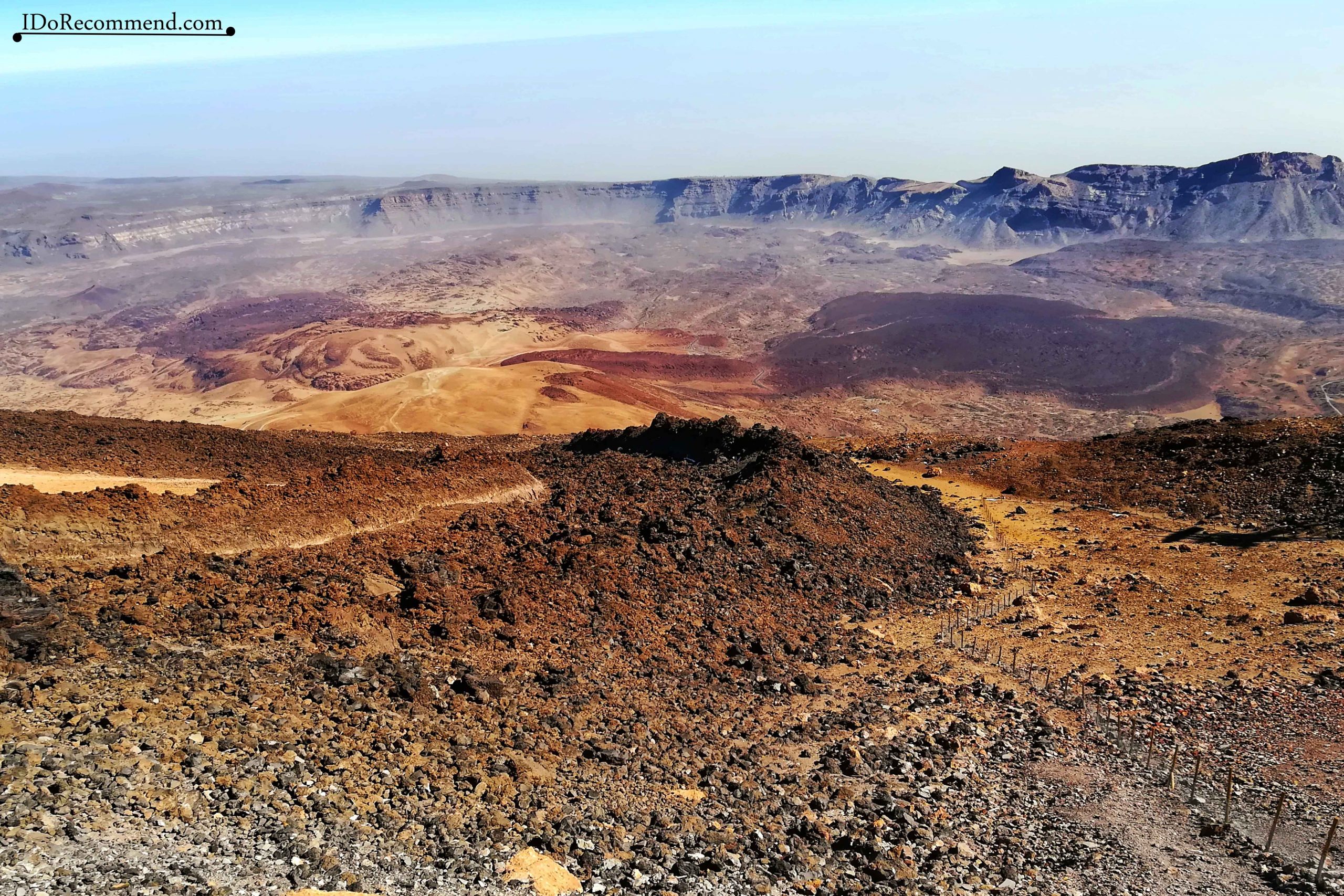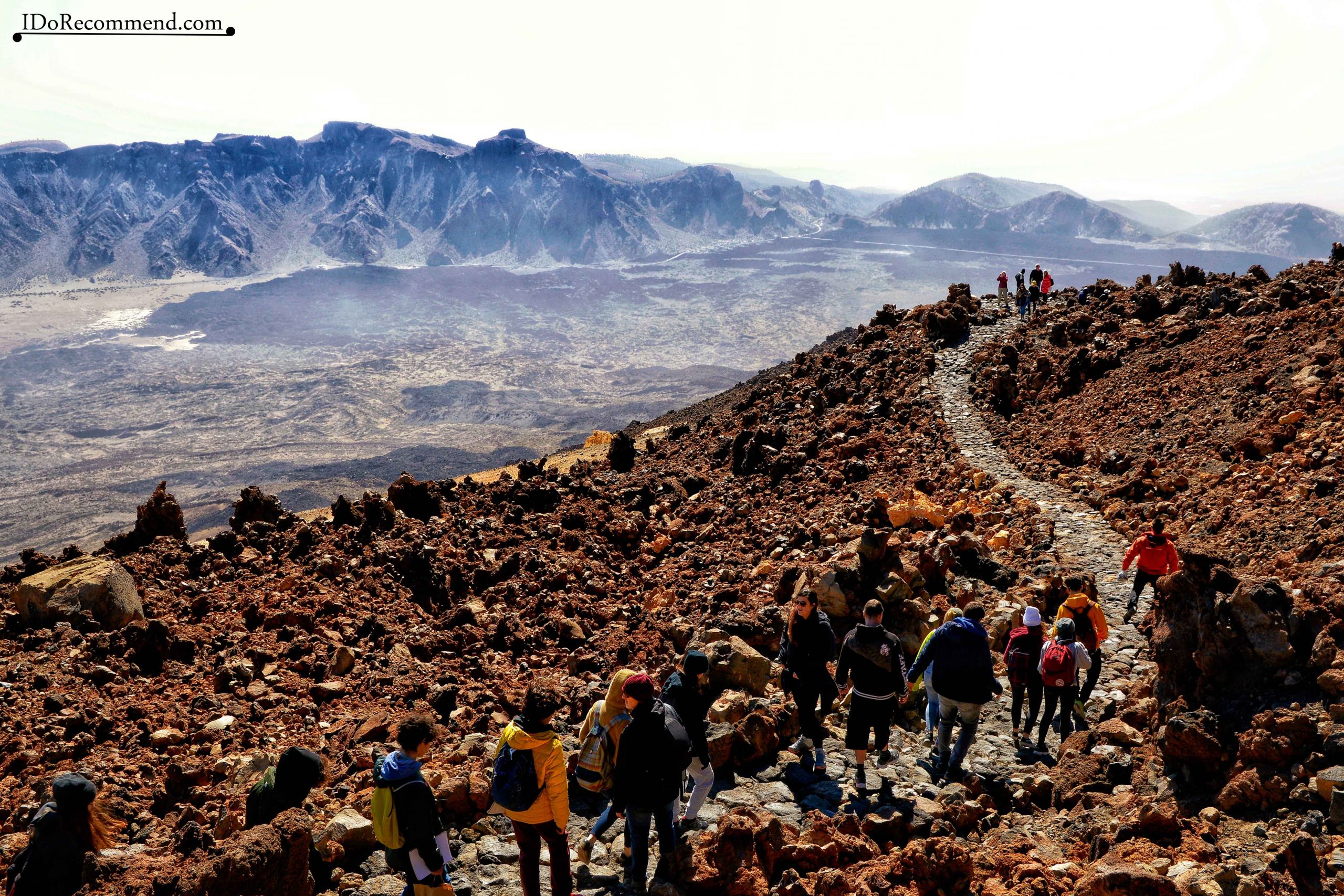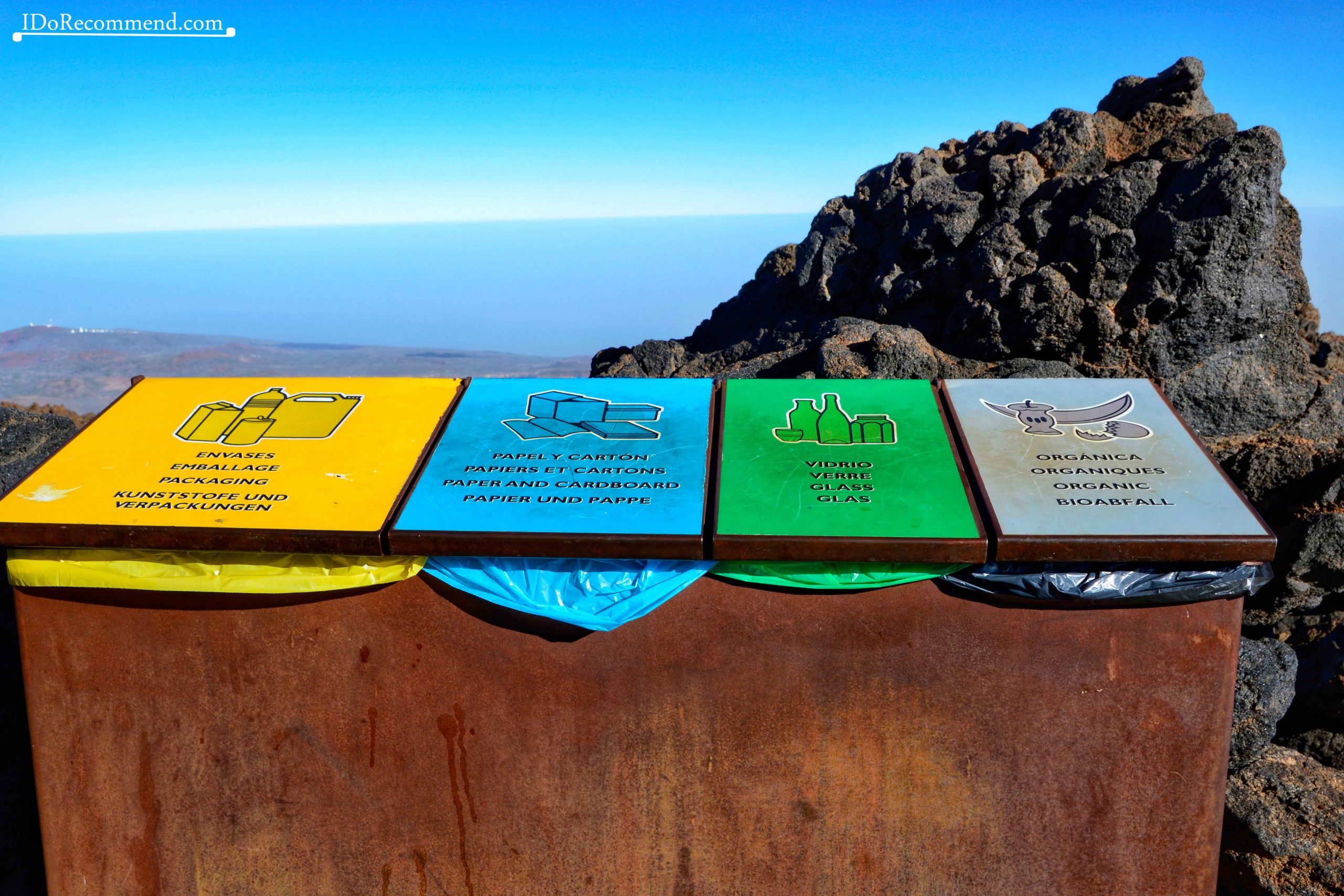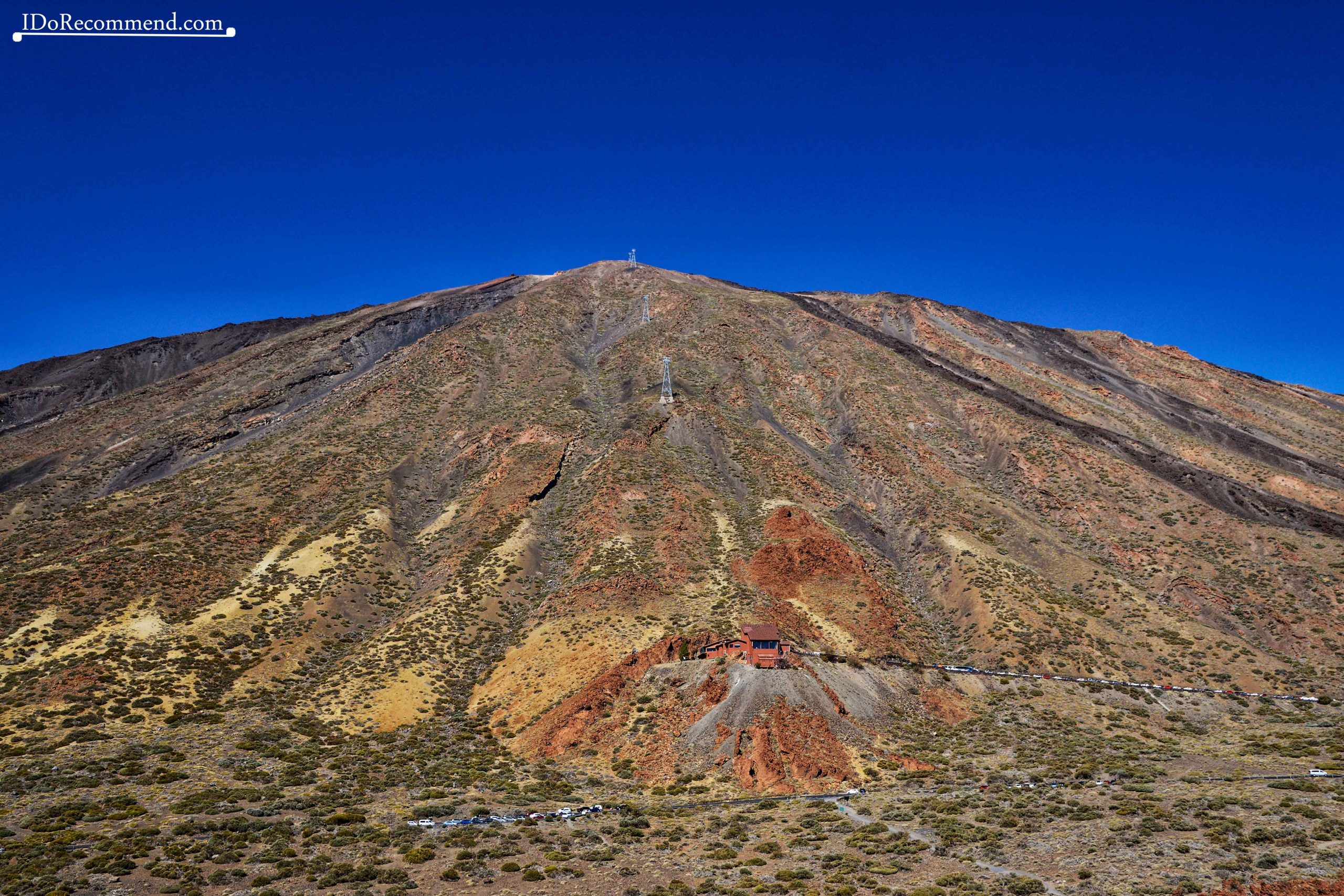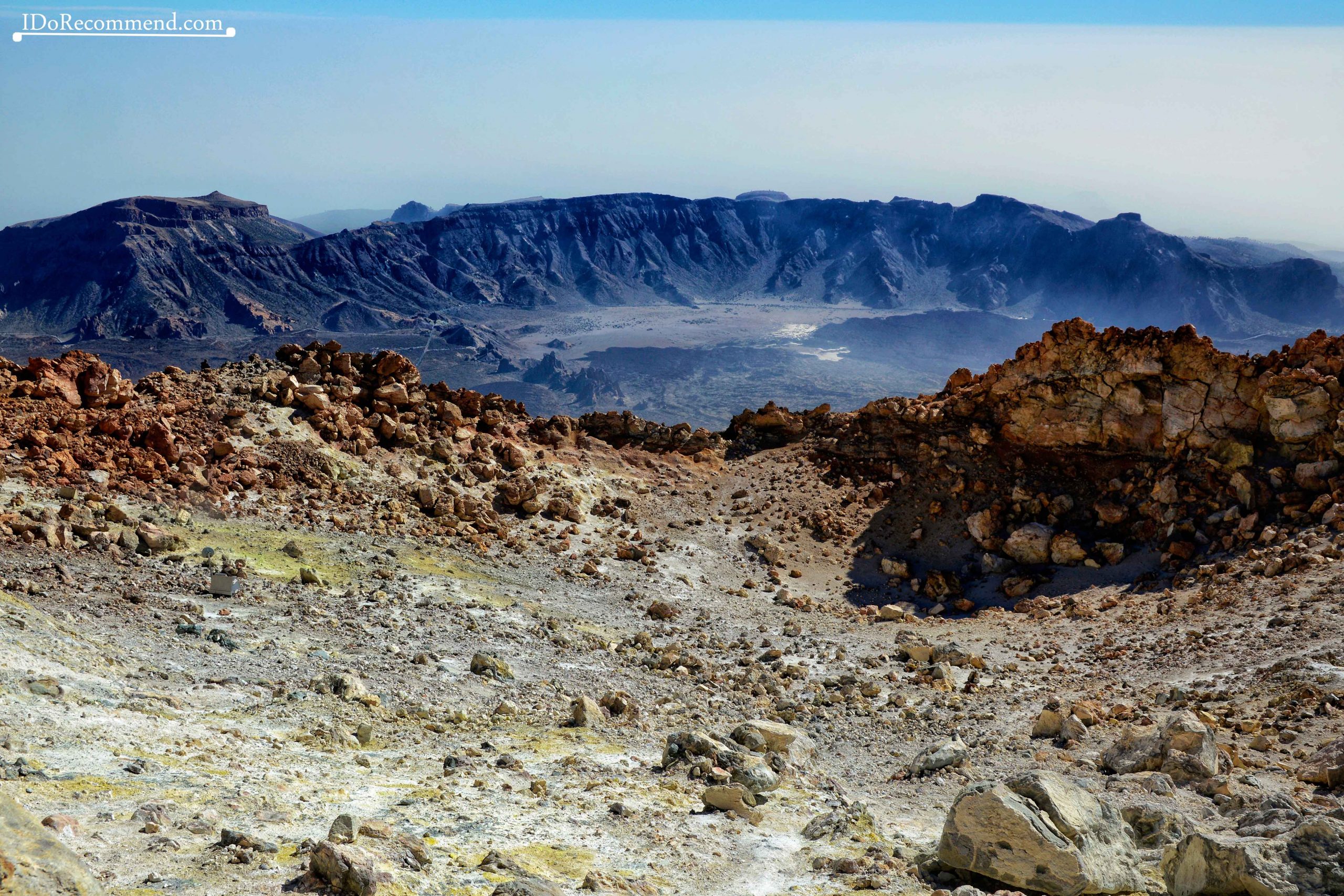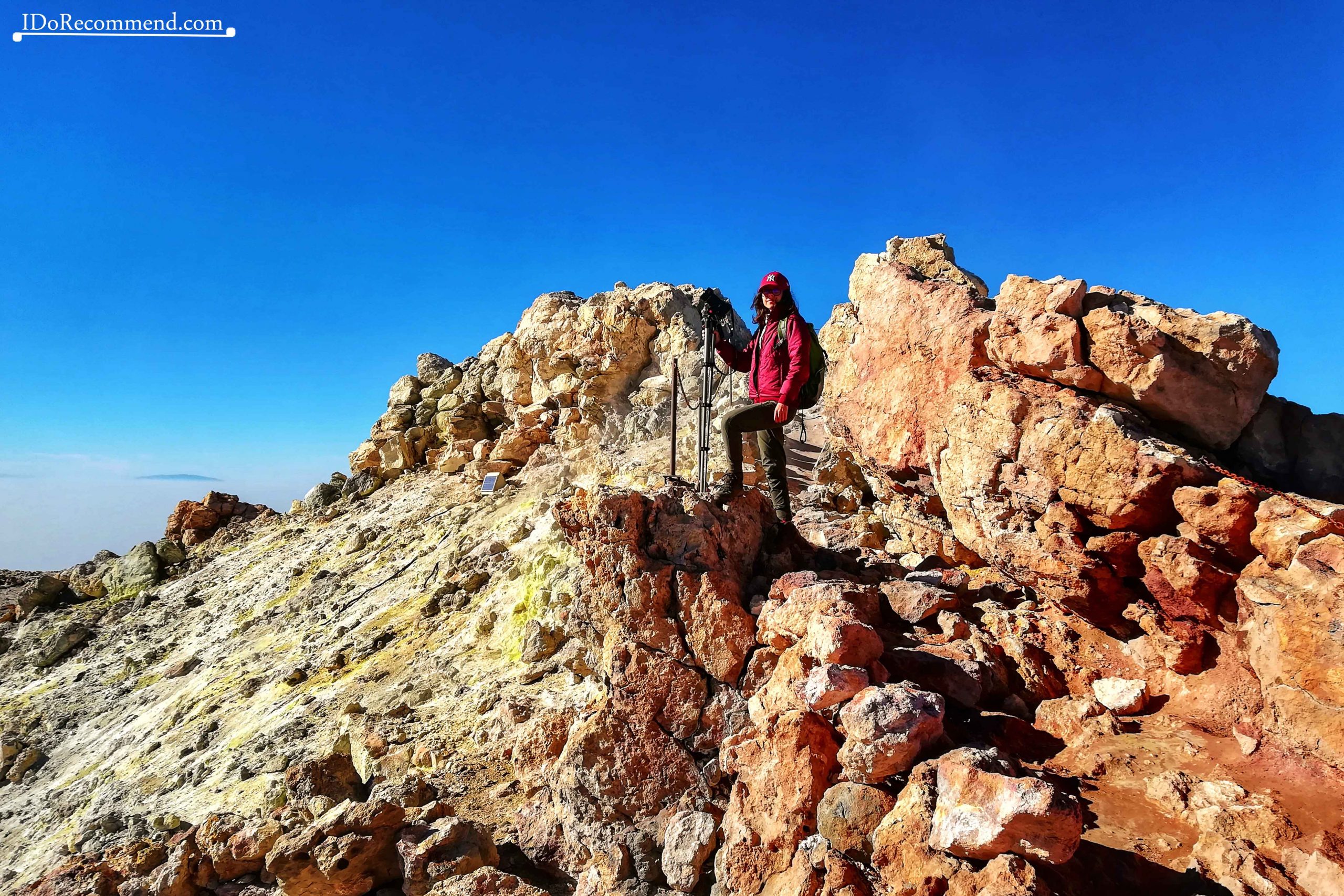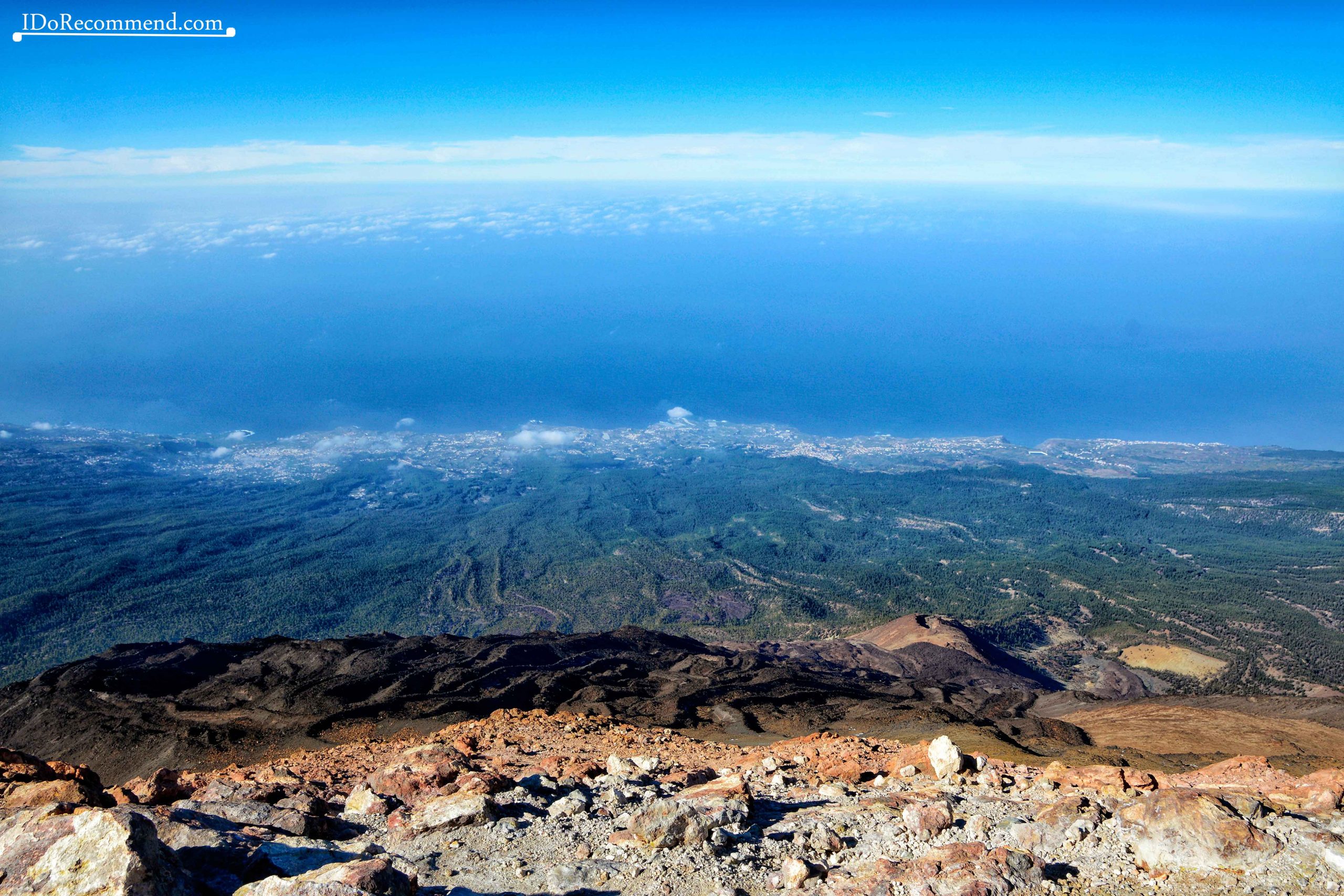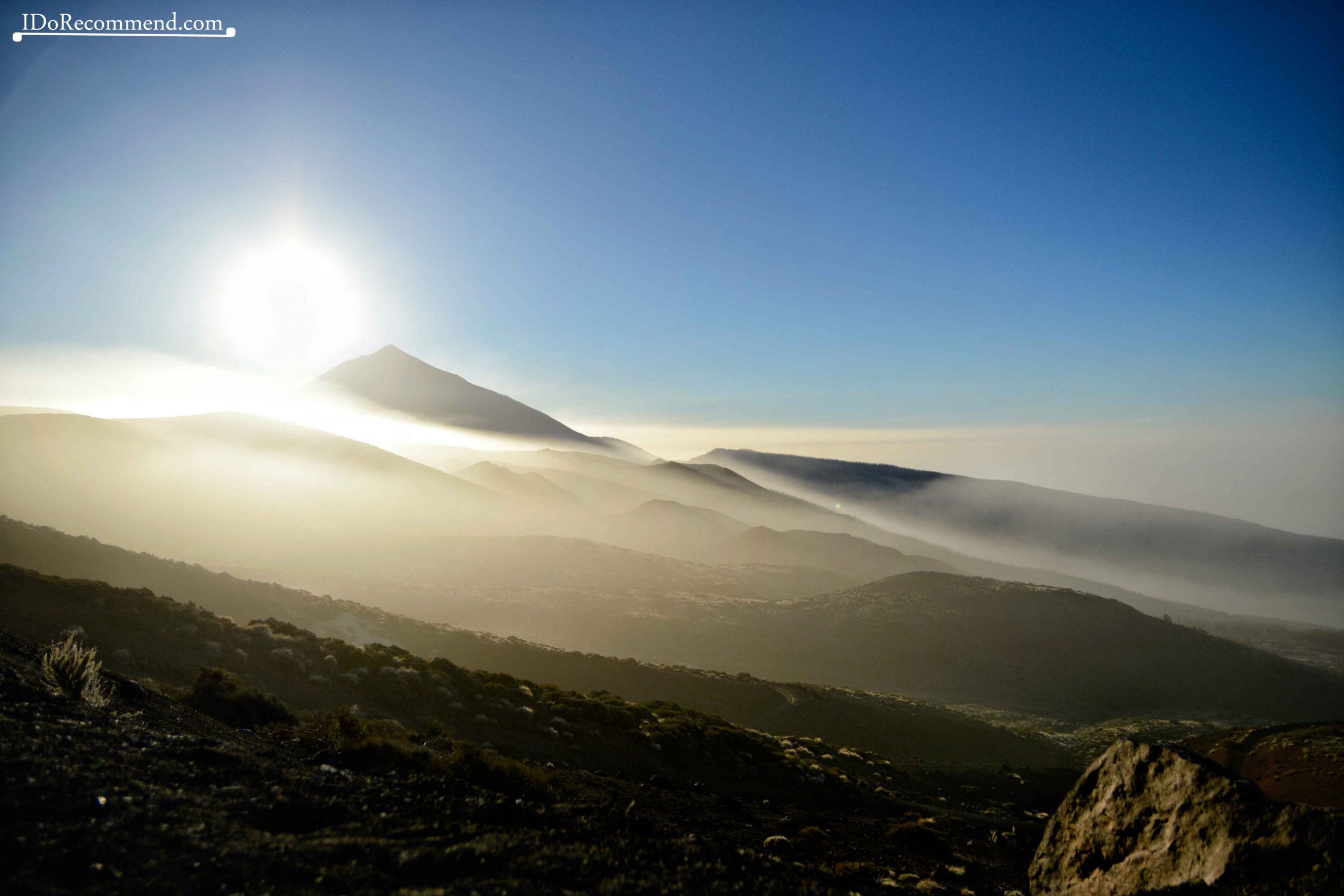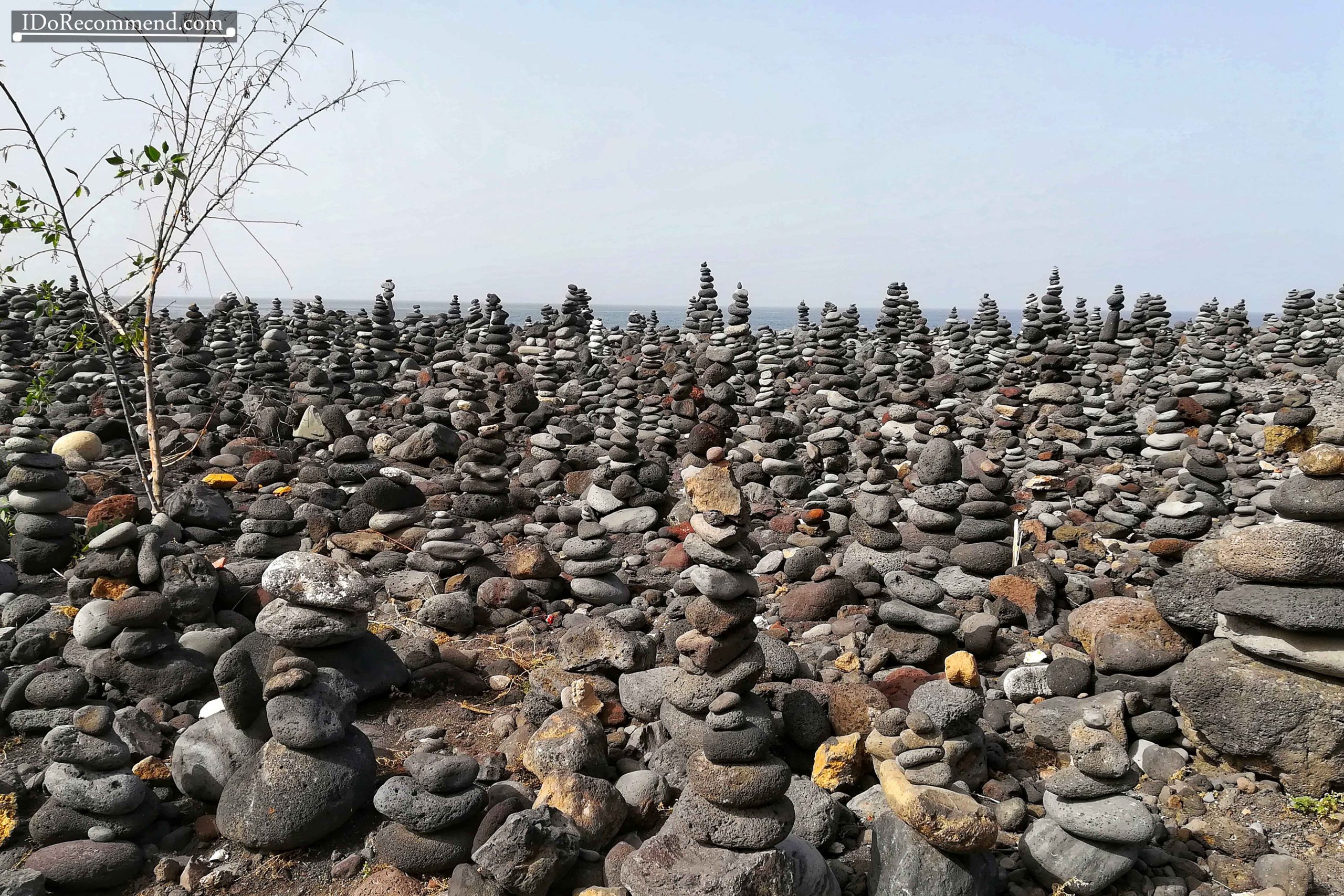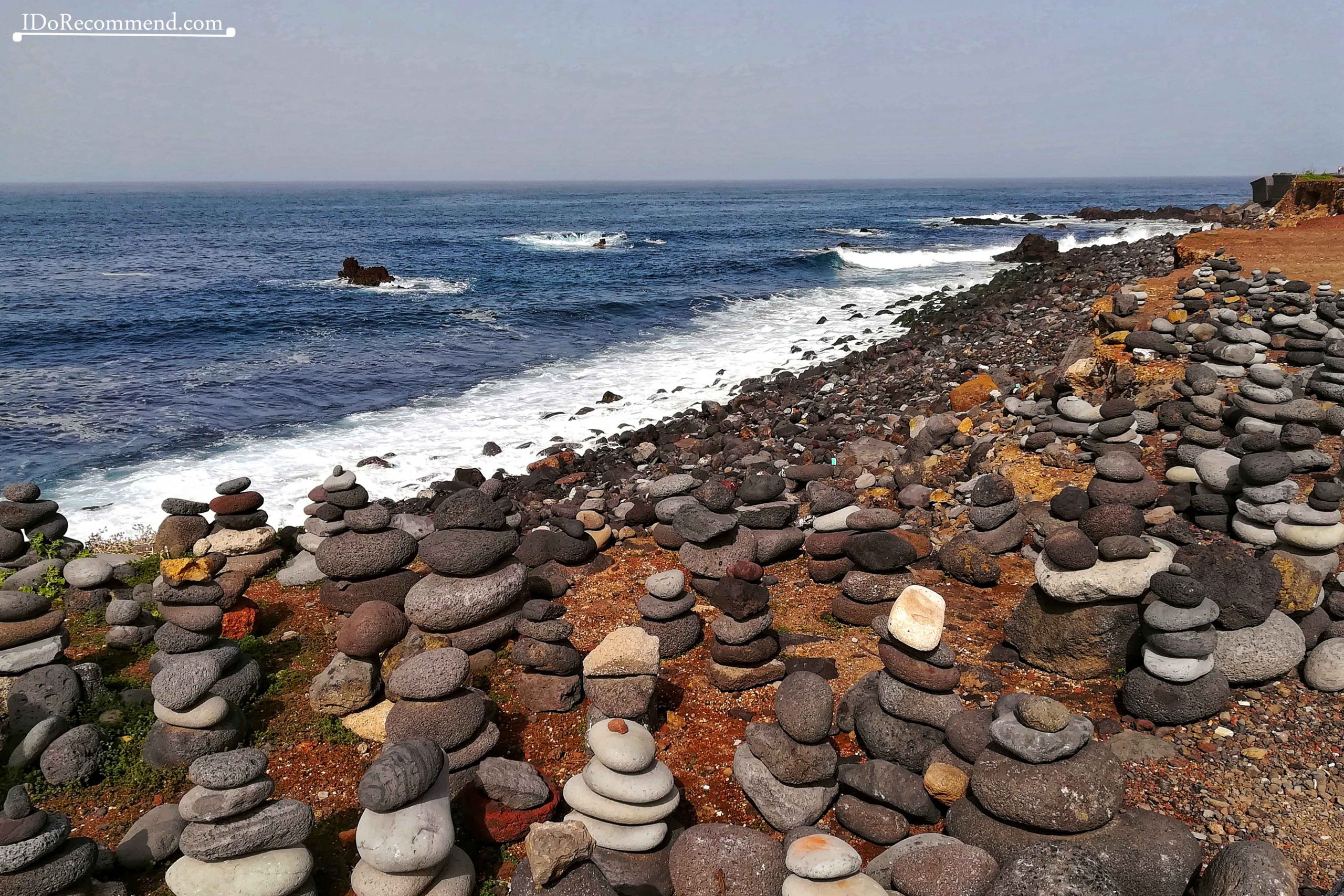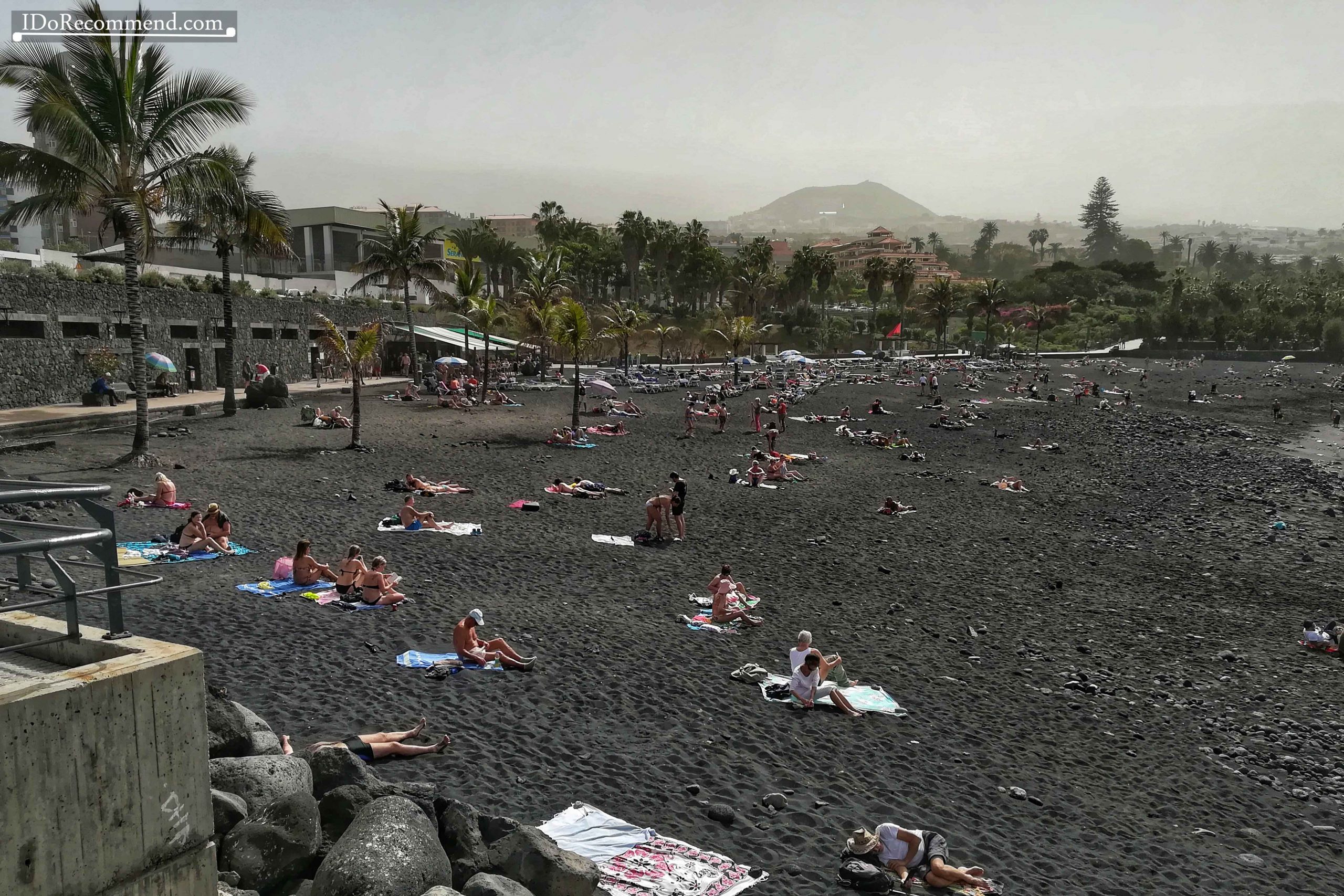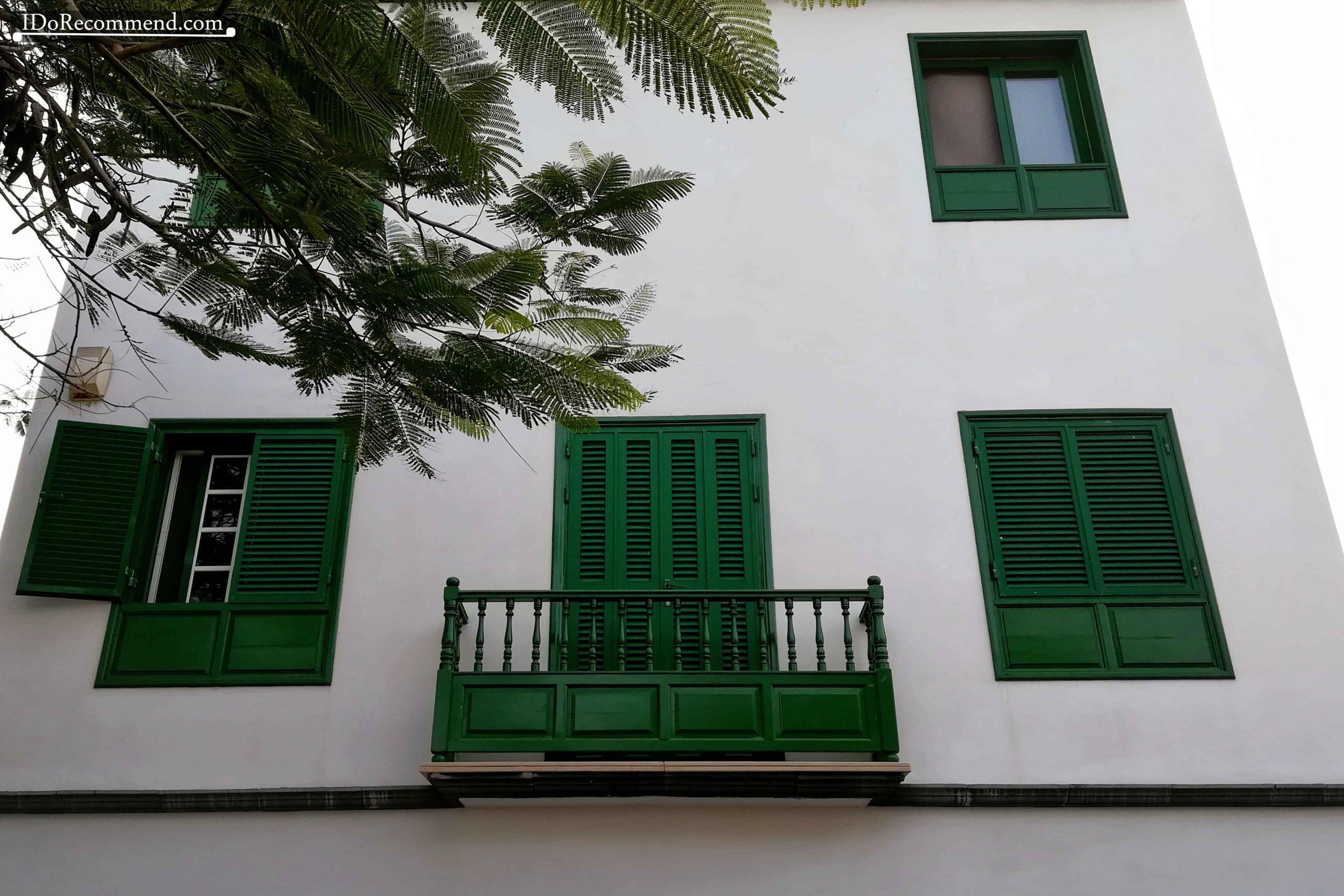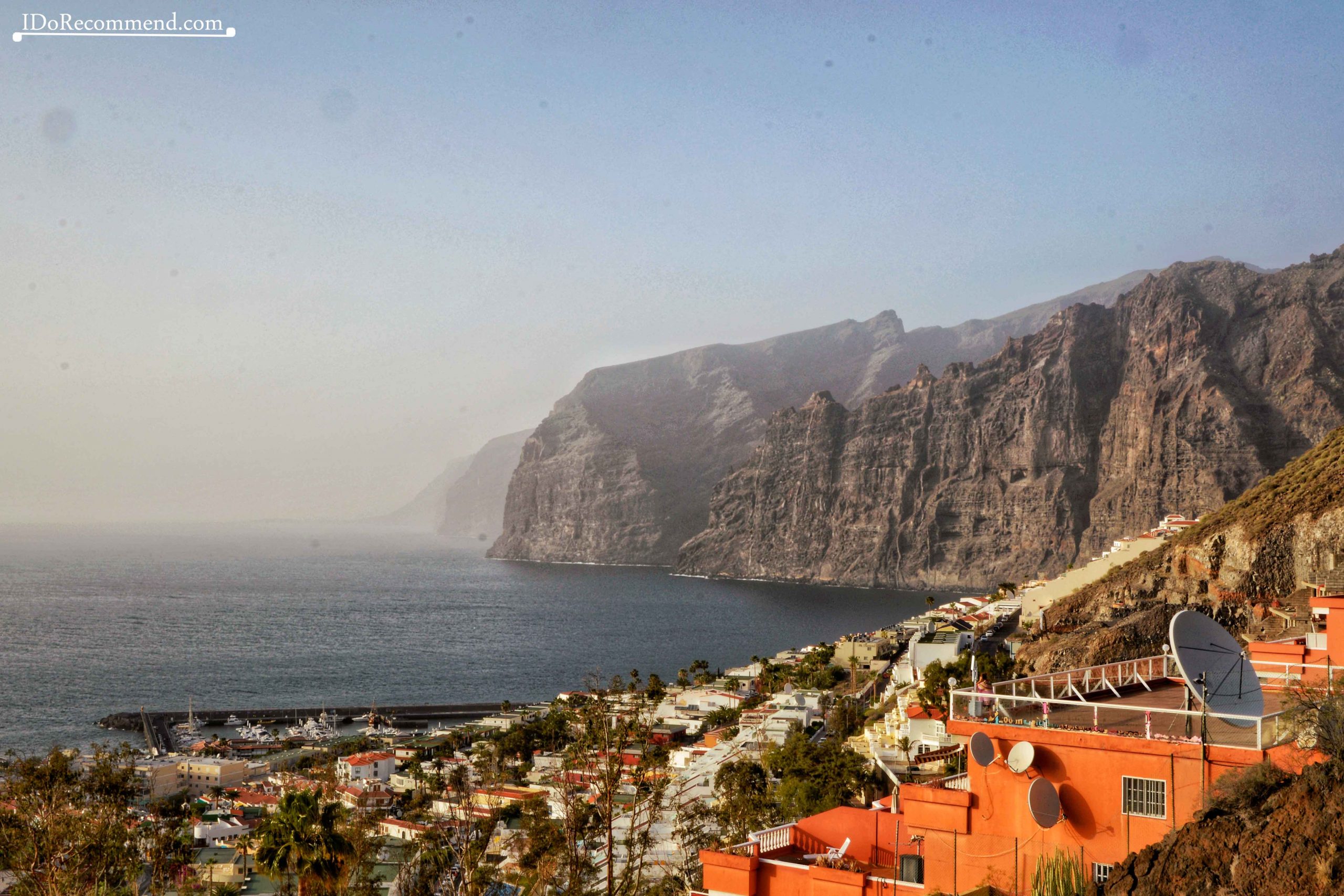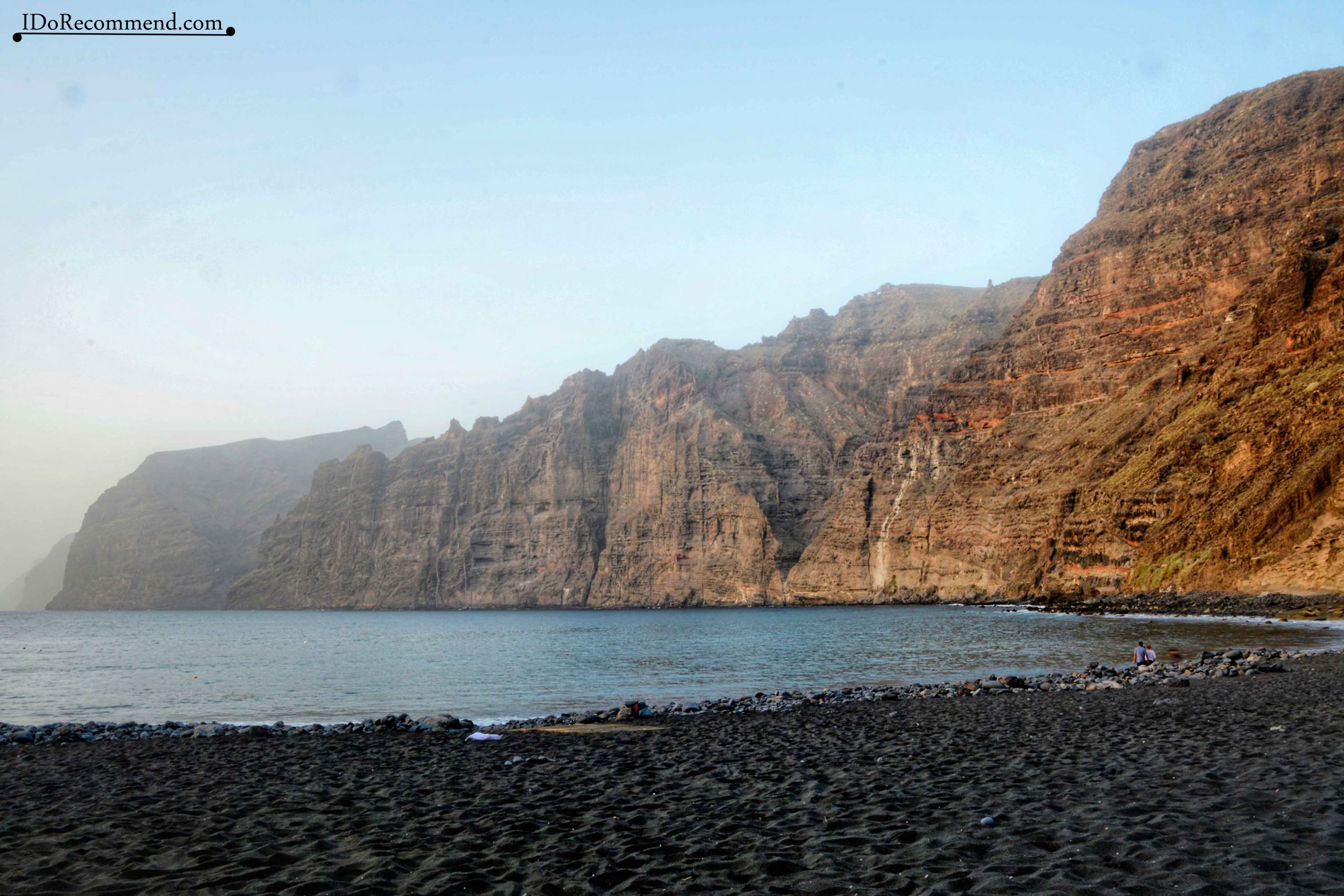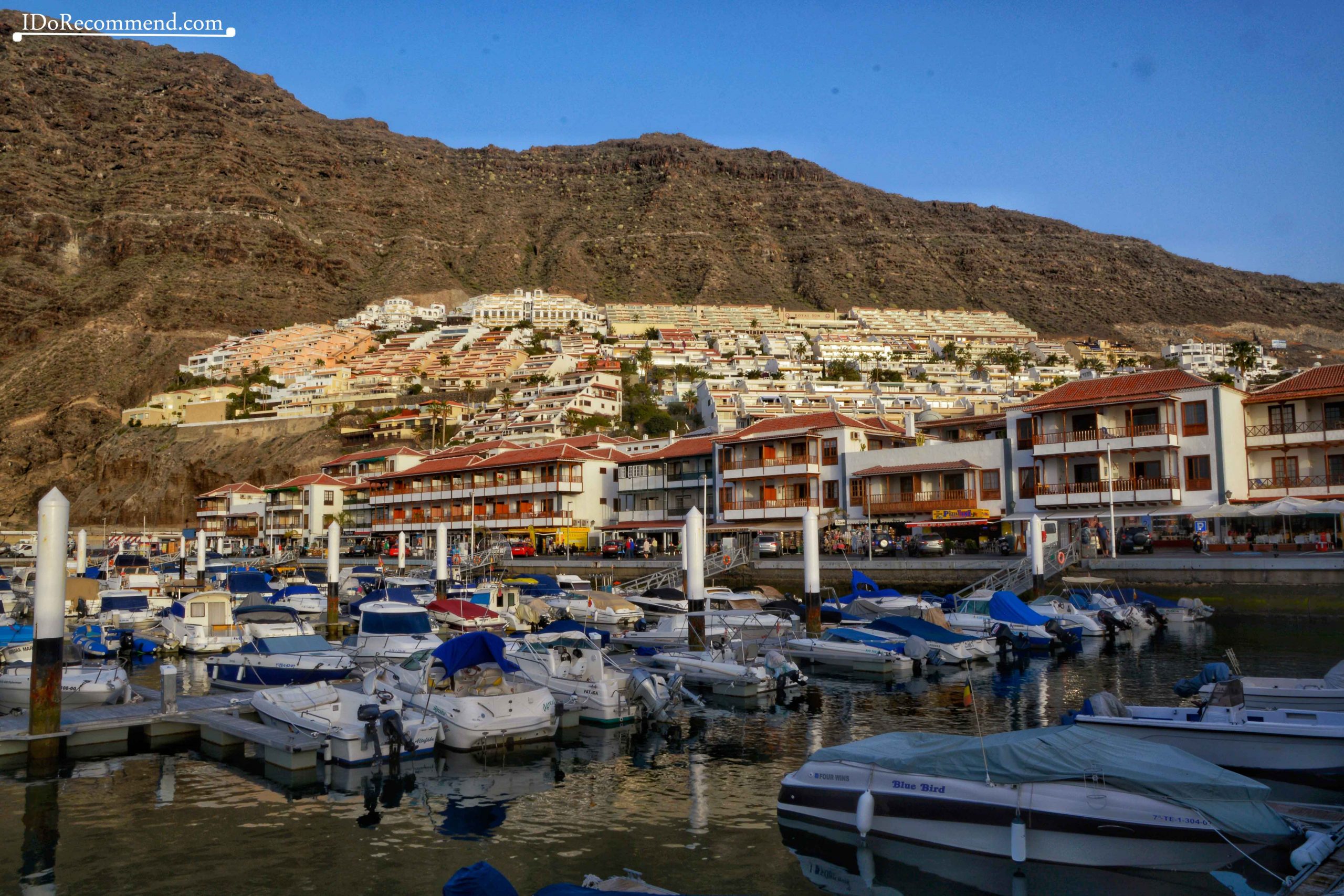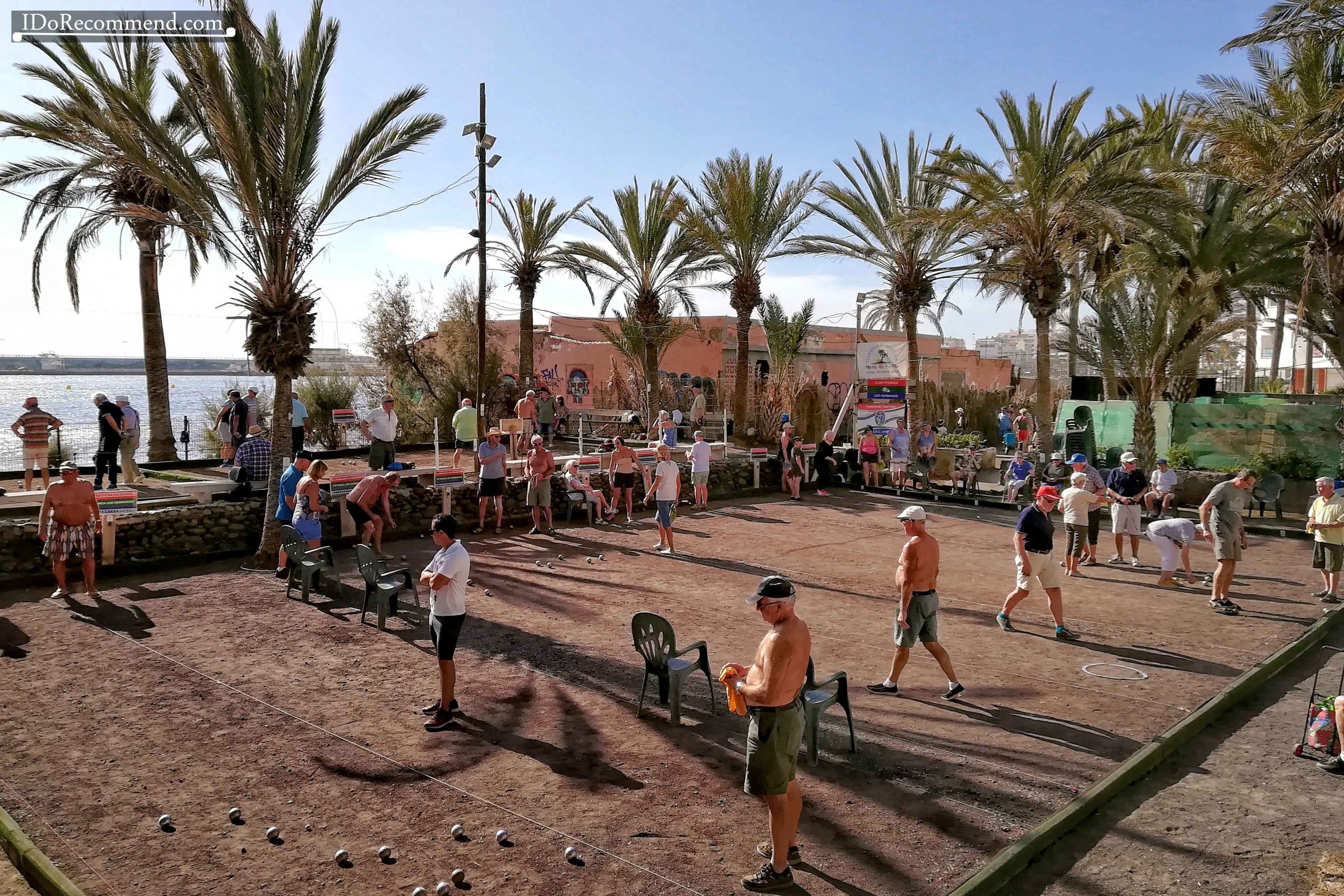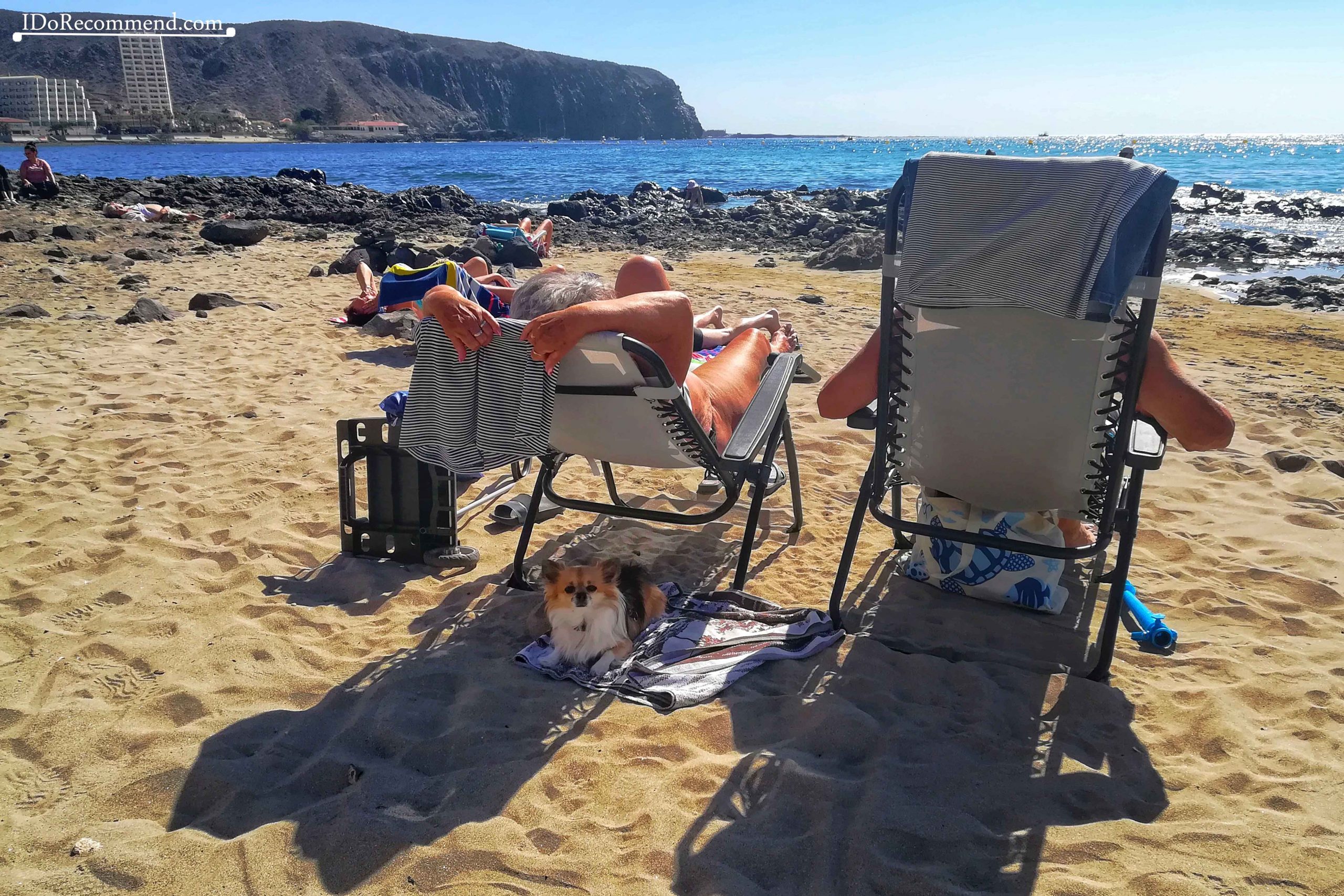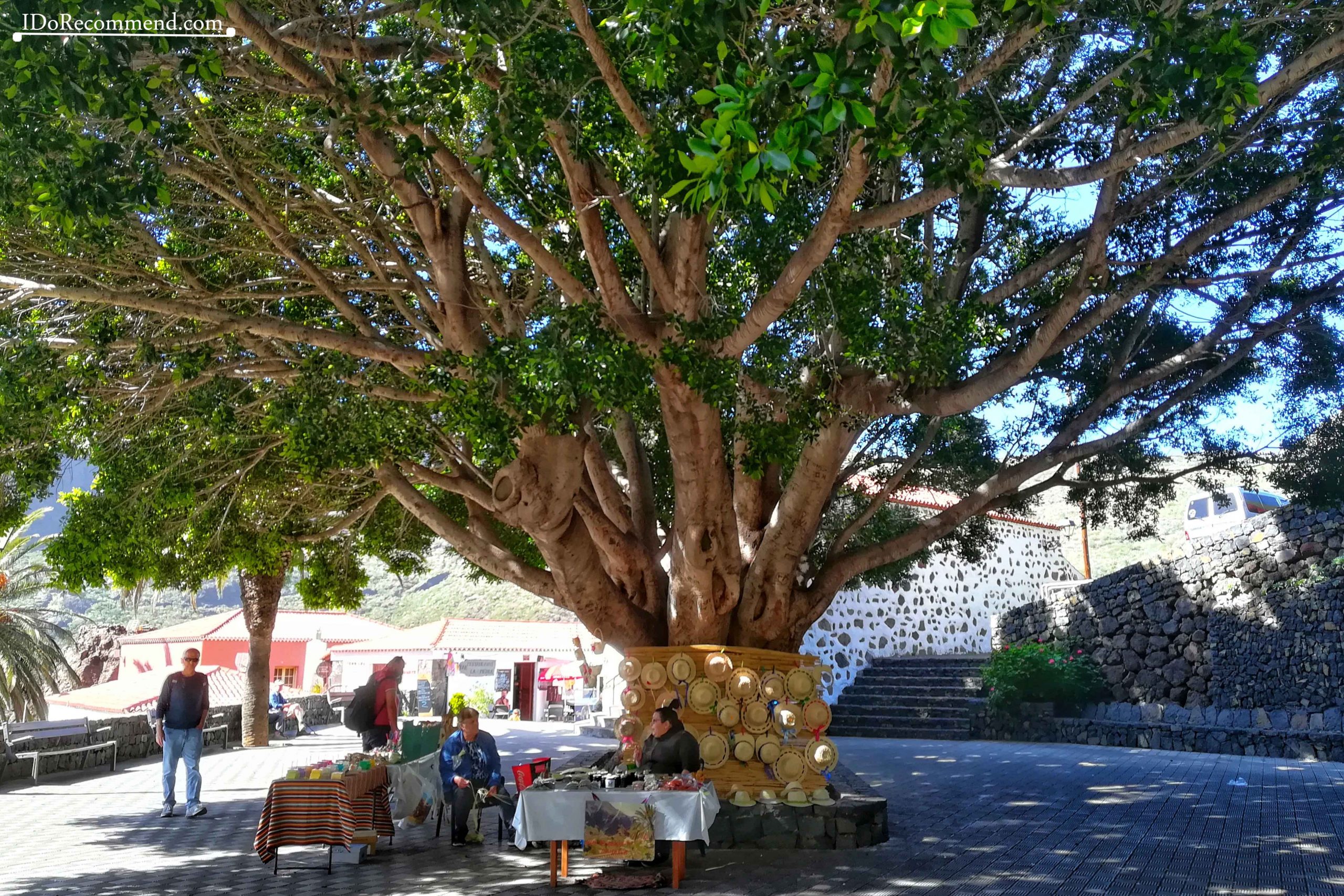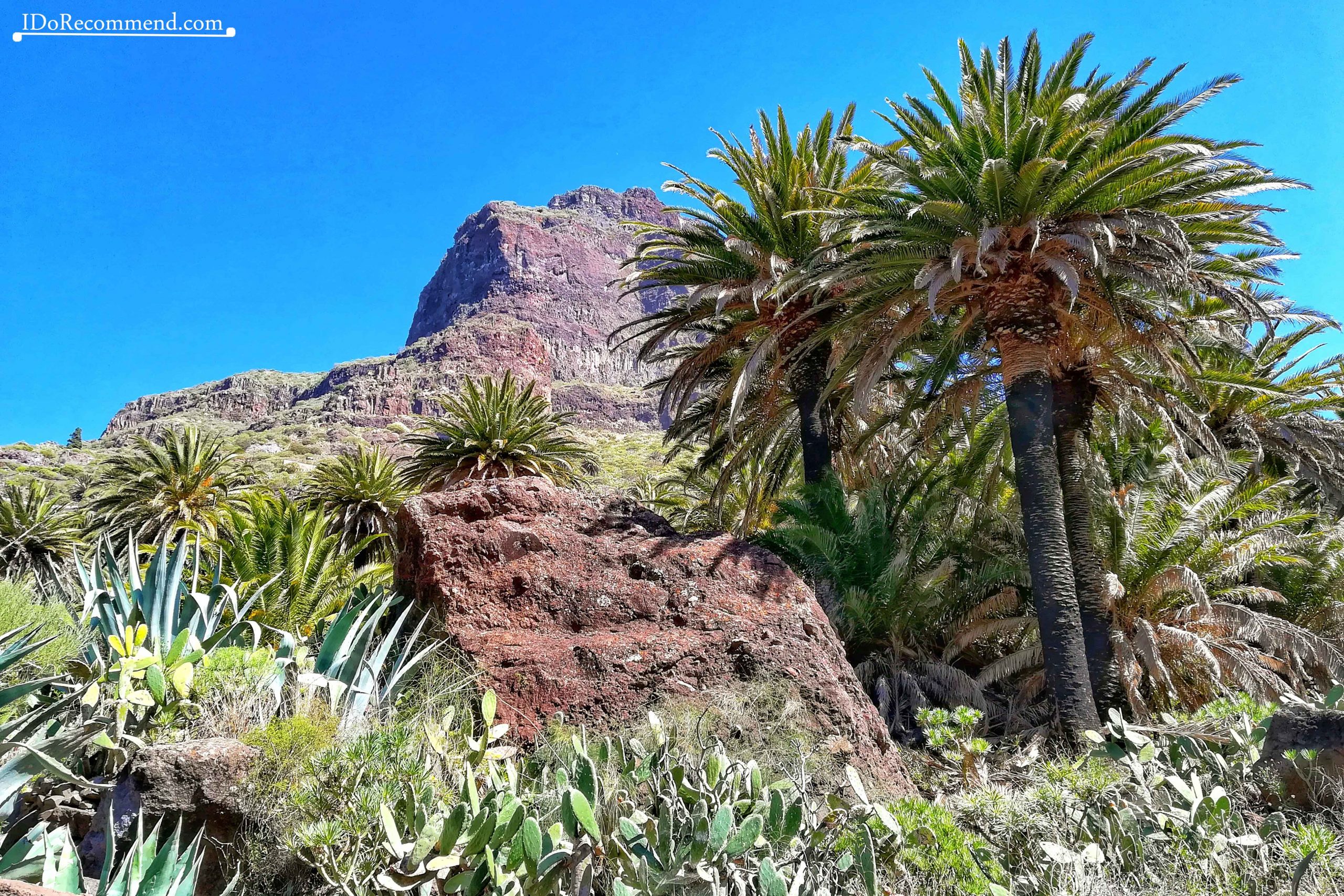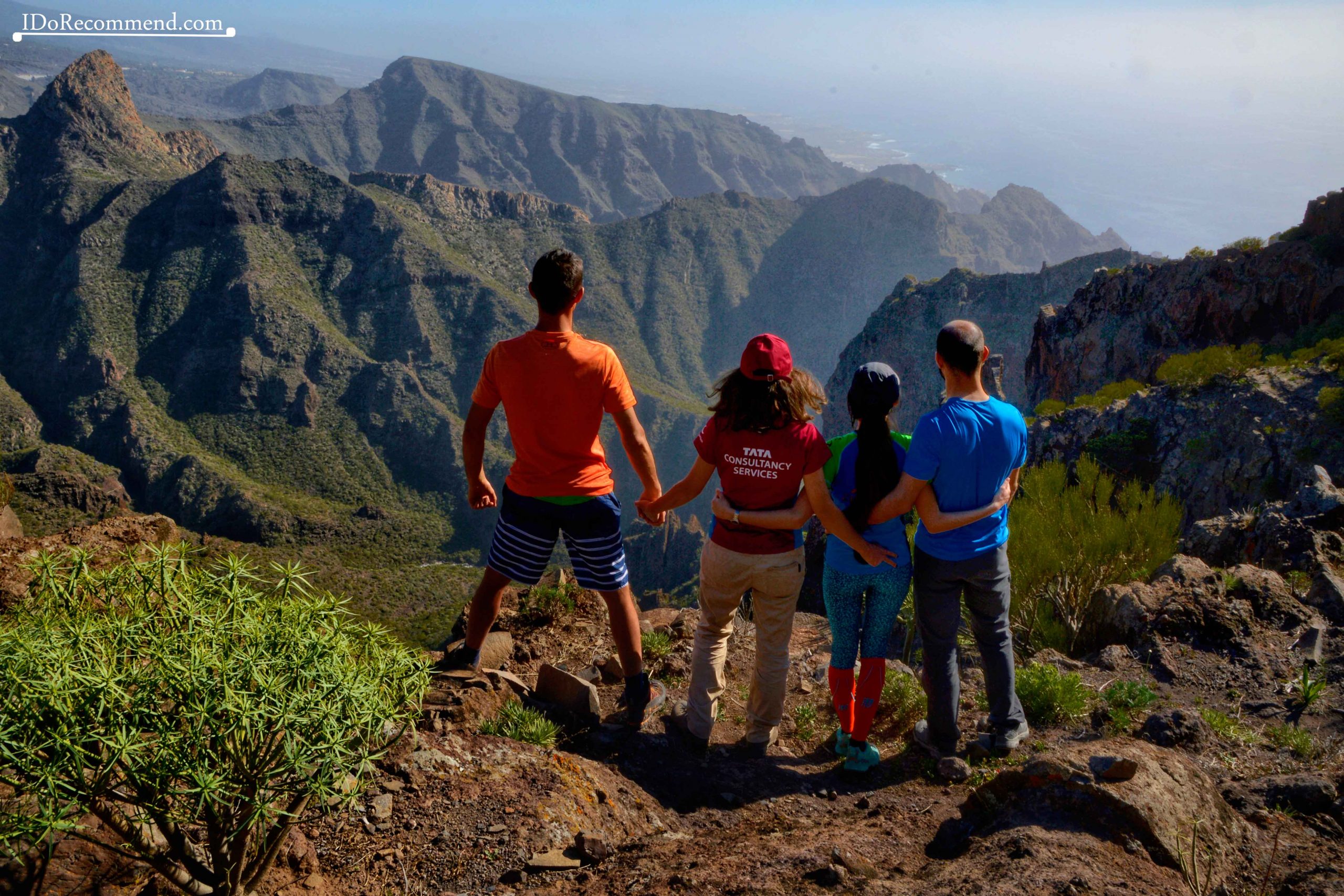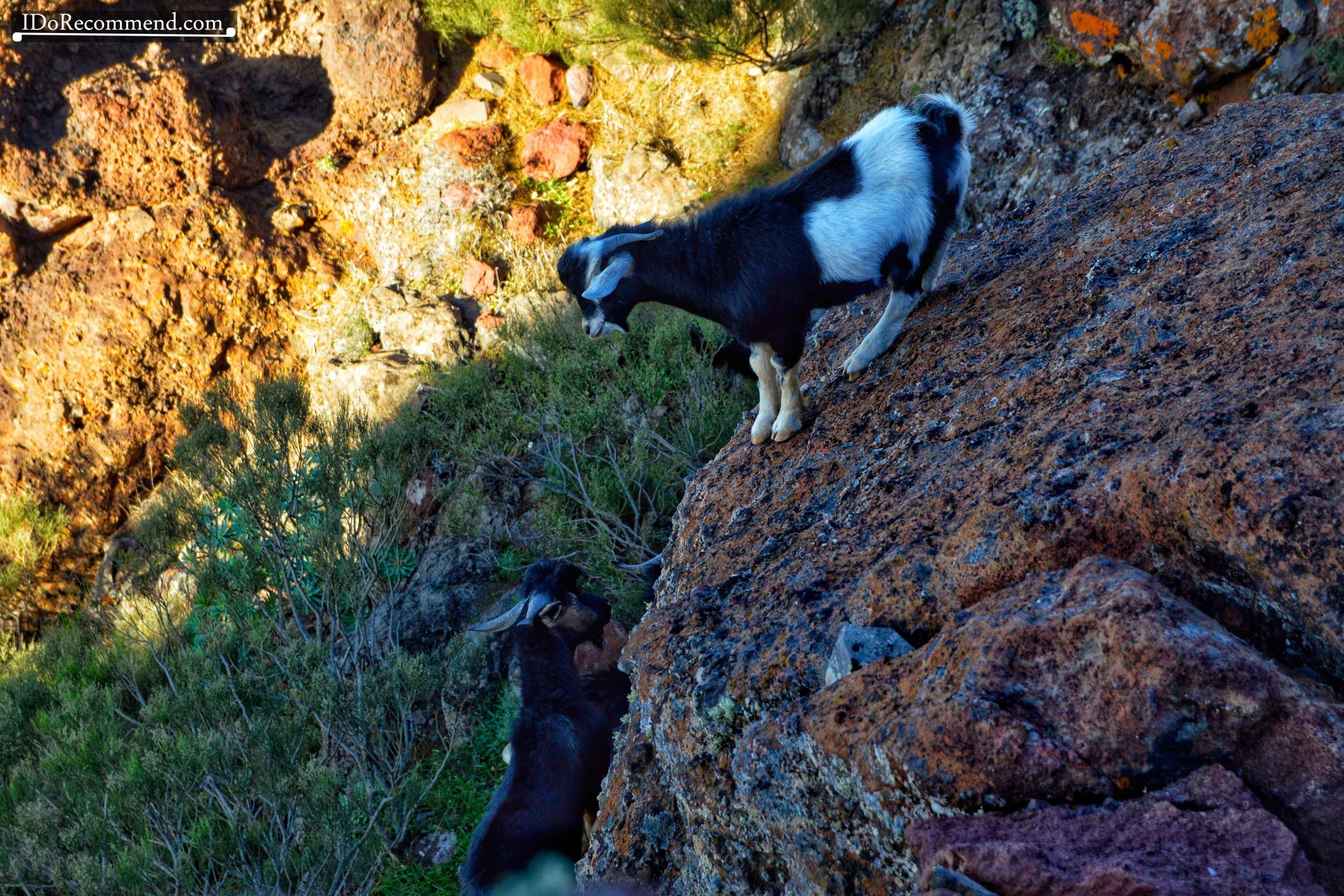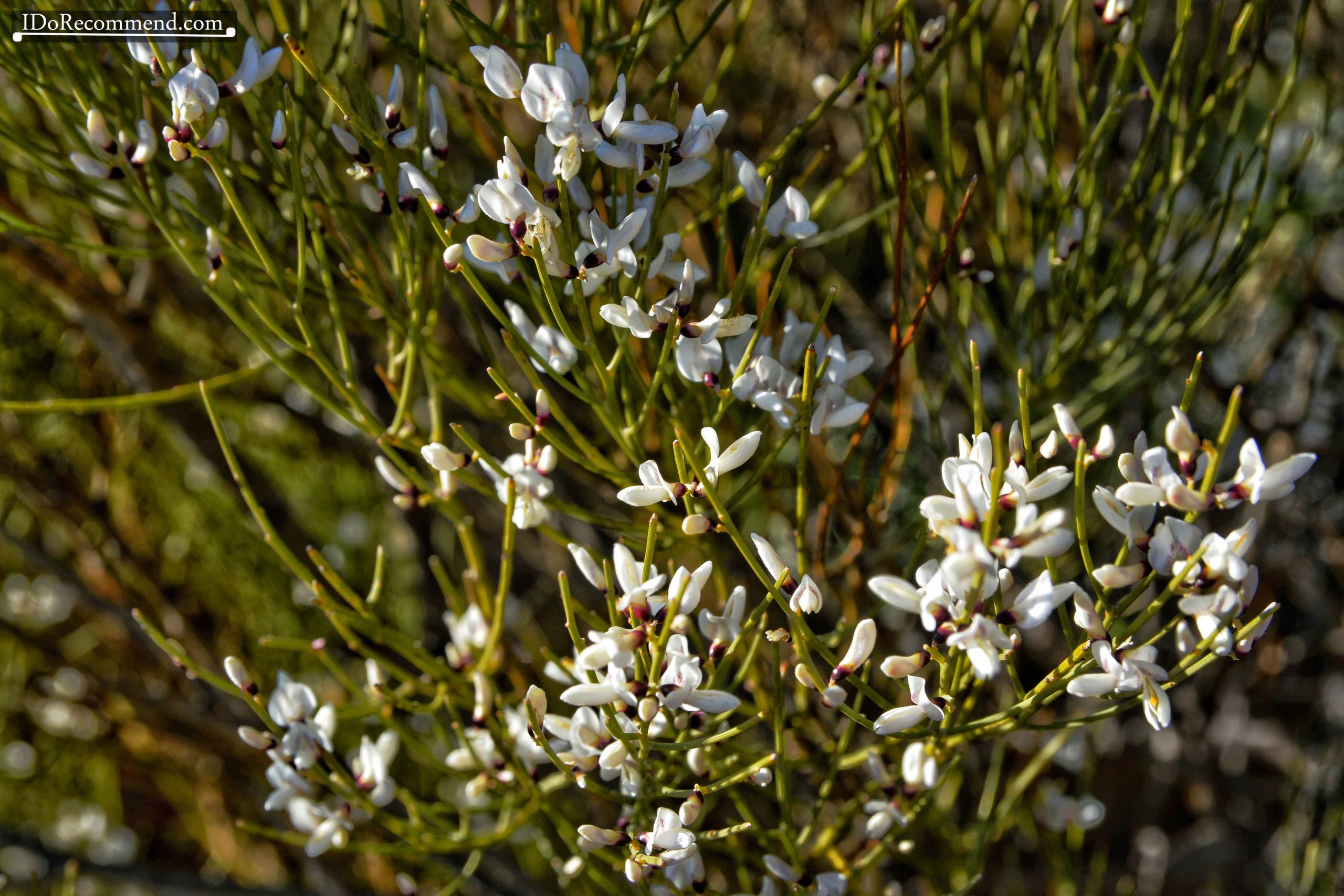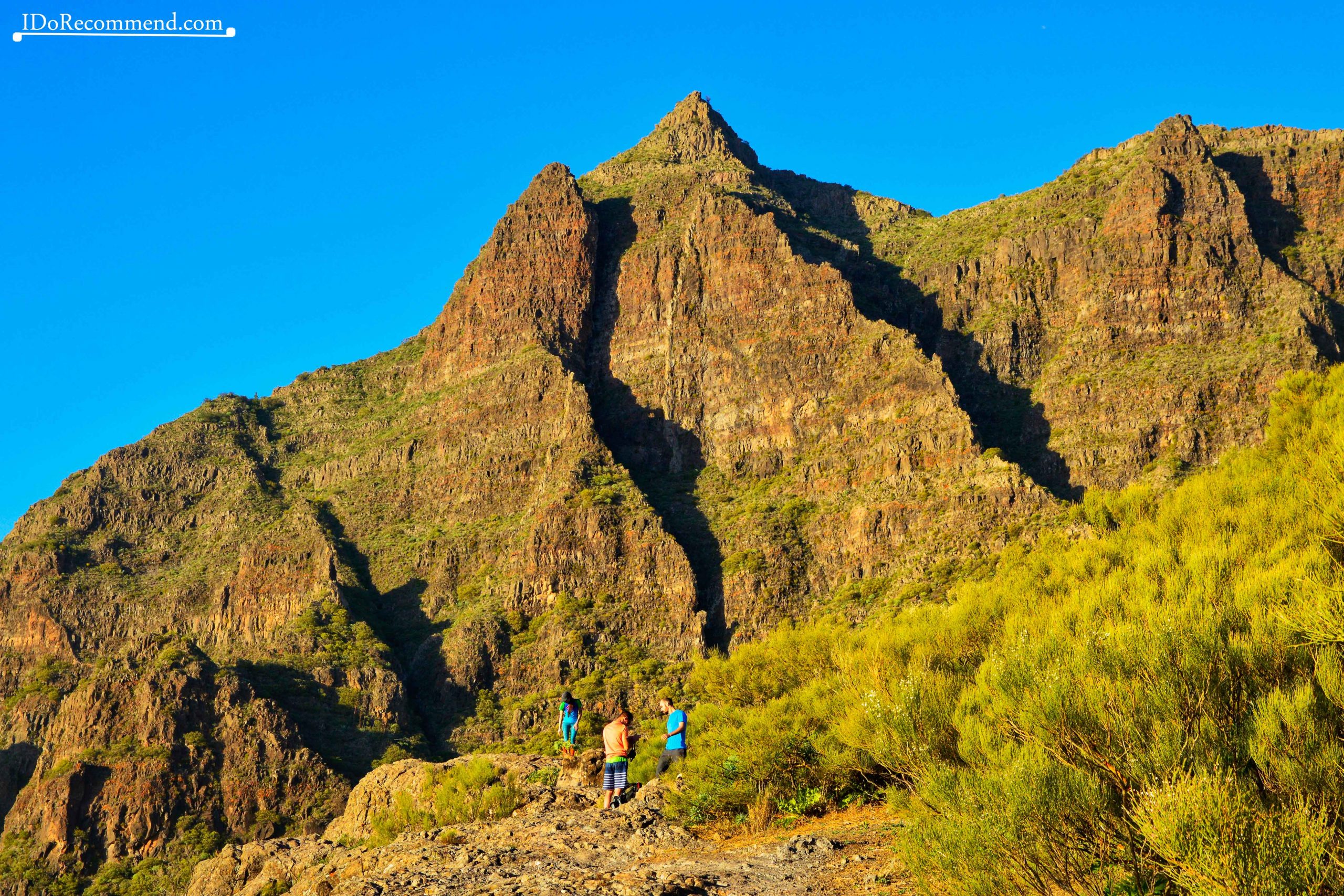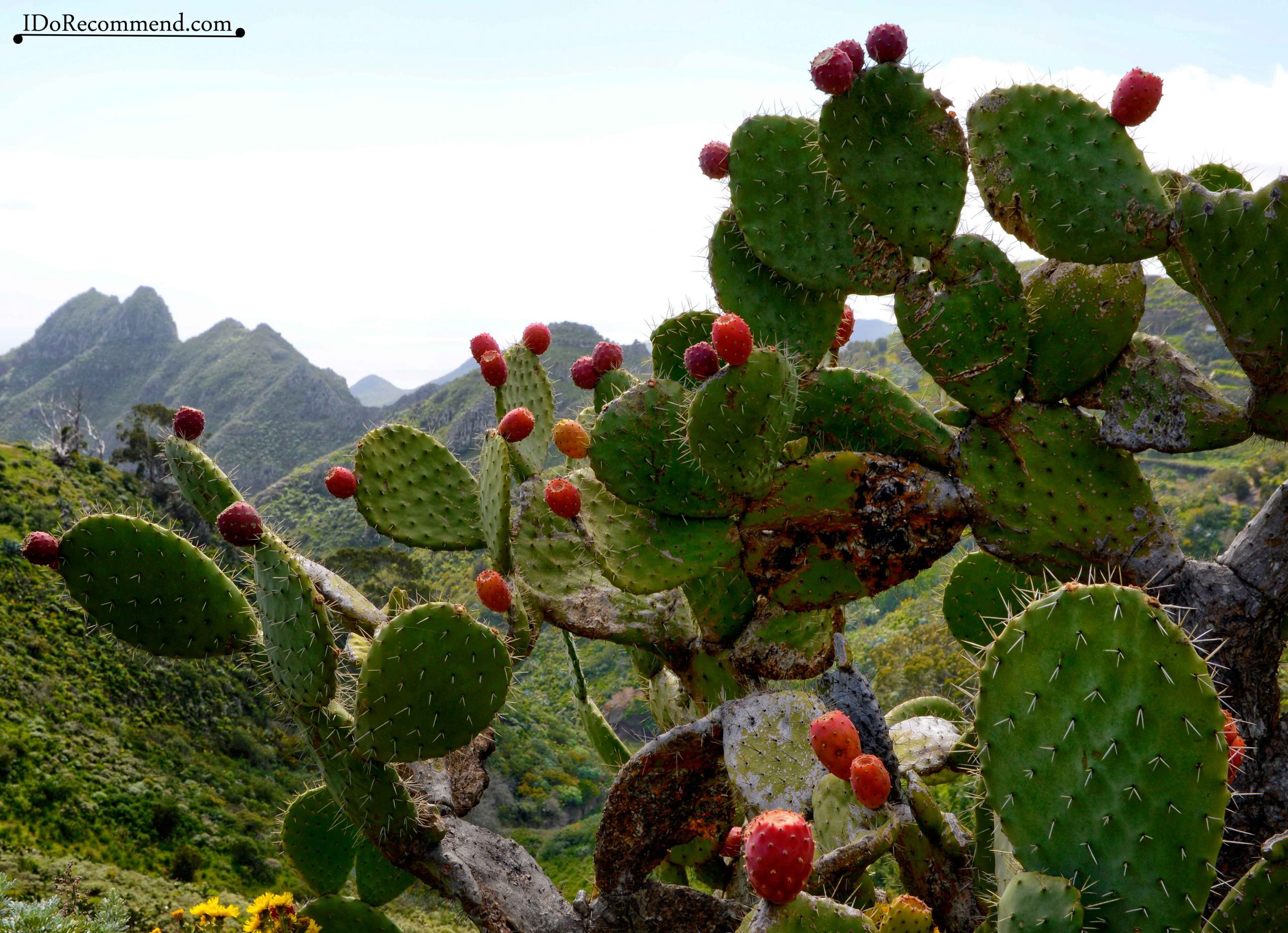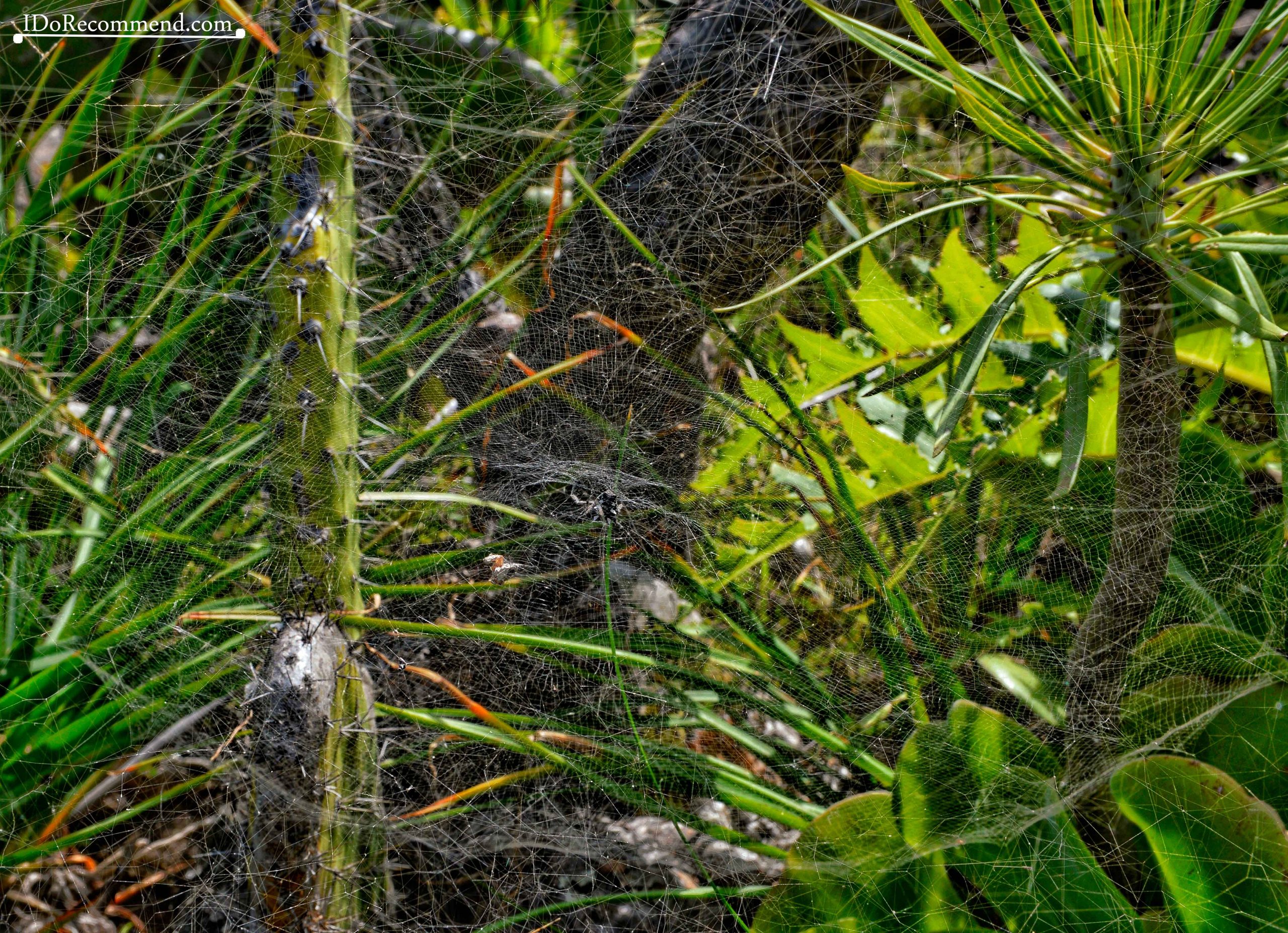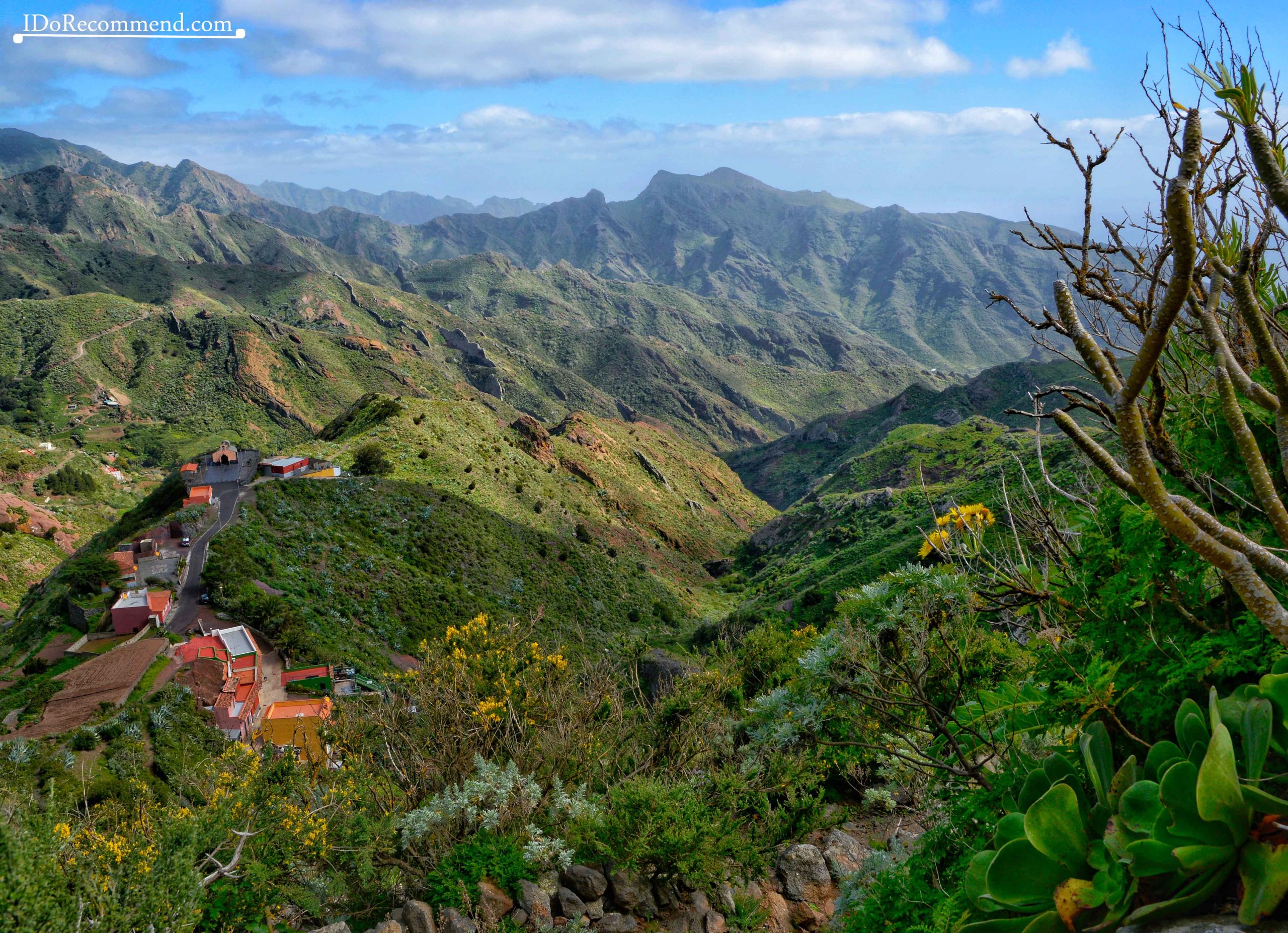This article is also available in Romanian.
The Canary Islands are located in the Atlantic Ocean, very close to the northwestern coast of Africa. This archipelago which belongs to Spain, is made up of 7 volcanic islands. The largest and most populated of these islands is Tenerife, with its capital at Santa Cruz de Tenerife.
A few months before going to Tenerife, we saw on Aventurescu.ro a simulation (accommodation and flight) for a holiday in one of the Canary islands in winter, and the whole package did not exceed 230 € per week. That was a good price, so we called some friends and together we agreed to go in Tenerife. Once because it is the largest island from the Canary archipelago, so it has more touristic objectives, and then because we wanted to climb the Teide volcano.
The winters in Tenerife are very mild, the average temperature being around 16°C. The water of the ocean is colder and there is a higher chance to rain, but we were very lucky and had a very good weather.
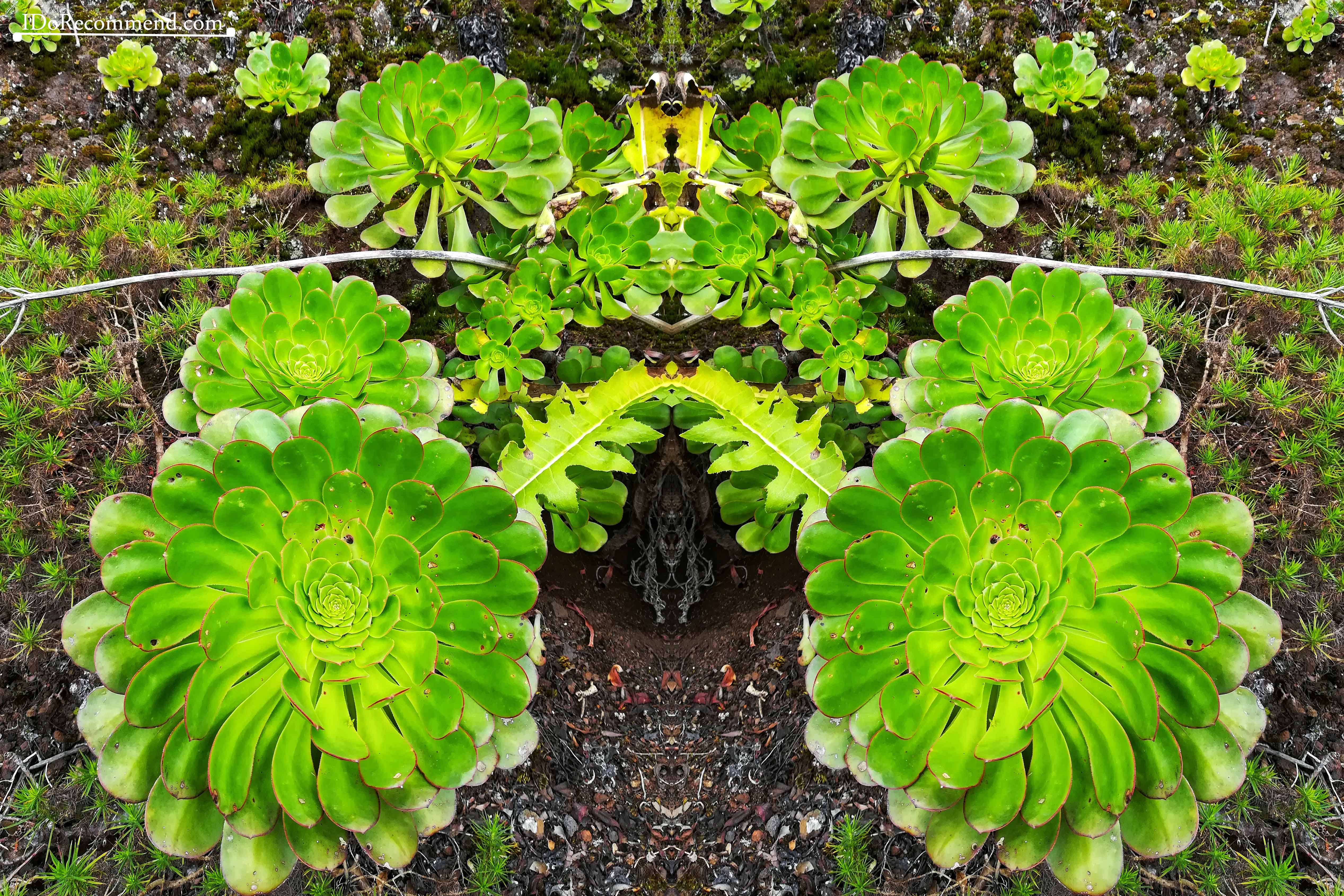
LOCATION
Tenerife / Canary Islands.
DURATION & MONTH
One week in the winter season (February).
TRANSPORT
Flight tickets Tenerife – Amsterdam → opodo.com
Our friends flew from Bucharest to Santa Cruz de Tenerife, with stops in Valencia and Madrid.
Car rental → Europcar
ACCOMMODATION
We rented a villa through Airbnb (located ~ 20 minutes far from the capital Santa Cruz de Tenerife).
80 € / night / house
IMPRESSIONS
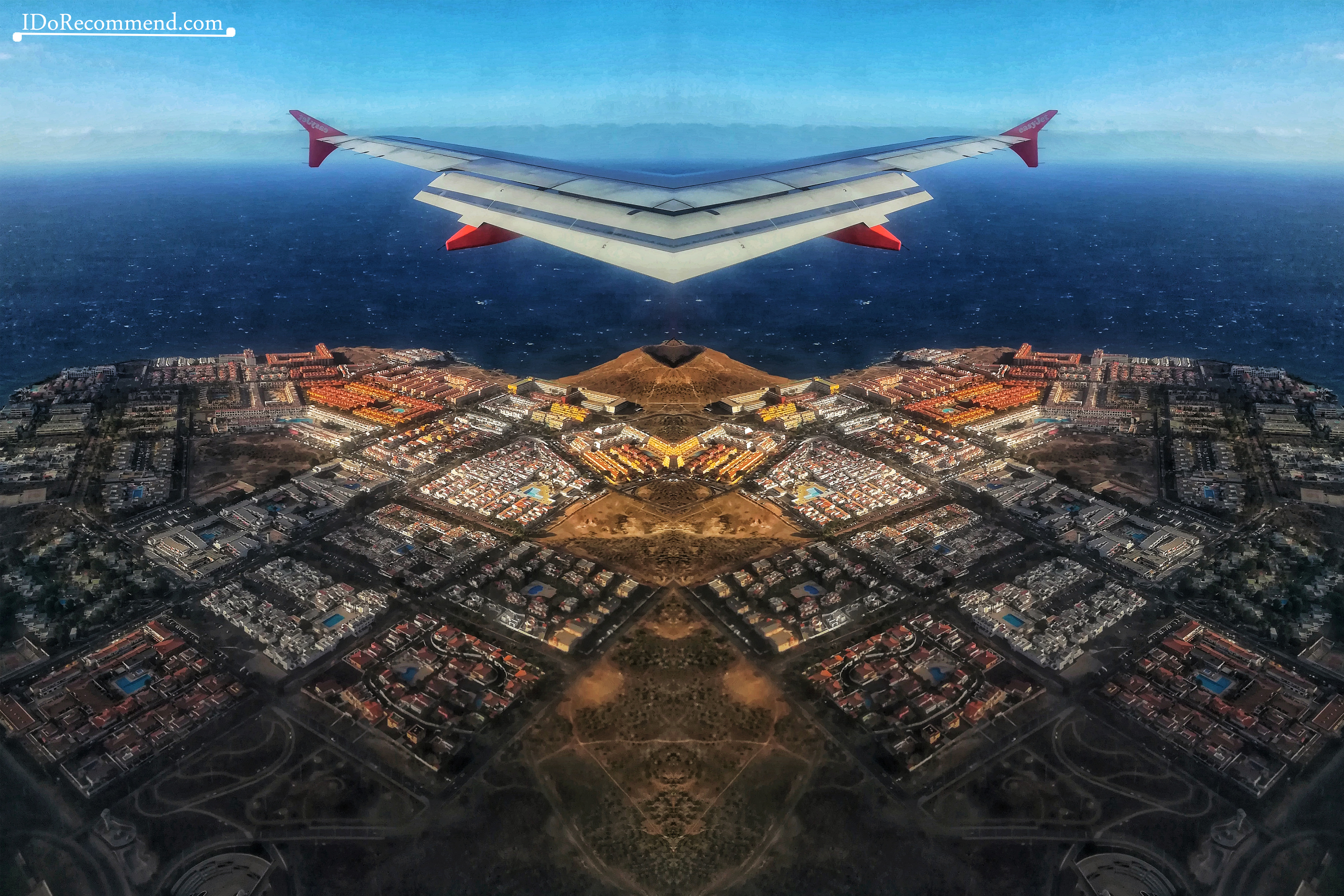
FLIGHT → The ticket’s price was cheap, but the flight had ~ 2h delay both on arrival and on departure. We also didn’t have cabin luggage. For carrying our belongings, we had two large mountain backpacks (25L and 35L respectively) and two other small backpacks for electronics and valuables.
ACCOMODATION → Accommodation is quite cheap on the island. The villa we rented through Airbnb had a living room and 2 bedrooms, a terrace with barbecue and a swimming pool shared with other residents of the residential complex, and the price of the entire property was ~ 80 € / night.
RESTAURANT → If you arrive in Los Cristianos, right across the beach there is an all-you-can-eat restaurant with a varied menu and good food for only € 10 / person – Don Comelón Buffet libre.
WEATHER → Daytime temperatures vary between 17°C and 24°C. Normally, in the southern half of the island it is warmer than in the northern one. If in the north (in Anaga) I wore a jacket and boots during the hikes, in the south (Los Cristianos) I could stay at the beach.
In winter the sun is strong enough to get a tan. We made the mistake of not using protective cream during hiking and kayaking and the sun burned us.
WATER TEMPERATURE → Ocean’s temperature was around 23°C and there were many people swimming, but to me the water seemed a bit cold, so I preferred to stay on the beach.
SNORKELING → Underwater wildlife was not as rich as I expected. During the snorkeling session only turtles and a few fish could be seen.
DOLPHINS → Tenerife was the first place where I saw dolphins in their natural habitat (during a kayak session with the guys from Xplore Tenerife).
NATURE / VEGETATION
→ Tenerife is a paradise for nature lovers. The vegetation on the island is very diverse and rich, many of the plants being endemic to the Canary Islands.
Anaga forest represents the touristic attraction which has impressed me the most, a mix of laurisilva with spectacular shapes, lichens, succulent plants etc. In addition, the green view around Masca village (especially the giant cacti and aloe plants) made me instantly fall in love with the island.
GENERAL CONCLUSION → Tenerife managed to impress me with its abundant vegetation and its rocky mountain shapes which seem to be carved by a skilled artist. For ZOO and water parks’ lovers, adults and children alike, there are many places to spend the leisure time (Loro Park, Jungle Park, Monkey Park, Siam Park). But the beaches and the color of the ocean did not seem very spectacular to me. Moreover, the acvatic fauna is not as rich as on other islands from the Equator. However, it is a pretty cheap destination that has many other beautiful things to offer.
6 day itinerary in Tenerife
Click on the small arrow from the map (top left corner) to expand the map legend and visualize all the touristic objectives mentioned in this article.
DAY 1
Anaga forest:
- hiking to Cabezo del Viento
DAY 2
Teide National Park (Teide Peak):
OPTION 1
- drive up to 2356m
- cable car (Teide Cable Car) from 2356m to 3555m
- walk up from 3555m to Teide peak (3718m)
OPTION 2
- drive up to Montaña Blanca Sendero
- walk up from Montaña Blanca Sendero to Teide peak (trail)
DAY 3
- short visit to Puerto de la Cruz
- Garden of Stones / Stones piles
- Playa Jardin
- The Archipenque Lookout point
- Cliffs of Los Gigantes (Acantilados de Los Gigantes)
- Port of Los Gigantes (Puerto de Los Gigantes)
- Beach of Los Gigantes (Playa de los Guios)
- Legends Restaurant
DAY 4
- short visit to the city of Los Cristianos
- Xplore Tenerife (kayaking among dolphins and snorkeling among turtles)
- Los Cristianos beach (Playa de Los Cristianos)
- All-you-can-eat buffet at Don Comelón
DAY 5
- Masca viewpoint (Mirador de Masca)
- Masca village
- short hike on Masca Barranco trail (the trail is currently closed)
- hiking on the trail Casa de Araza → El camino Finca de Guergues
DAY 6
DAY 1
Anaga forest:
- hiking to Cabezo del Viento
- Laurisilva in Macizo de Anaga
- Macizo de Anaga
- Macizo de Anaga
Anaga is a spectacular place as I have never seen before. To get to the “heart” of the forest, we followed a narrow, winding road going to the maximum altitude of 1000m, passing near Mirador de Jardina and Cruz del Carmen (where it’s the Tourist Information Center of the reservation – provides information on the trails available for hiking). From Mirador de Jardina, we saw on the horizon lots of colorful houses that brightened the cloudy weather.
- Macizo de Anaga
- Mirador de Jardina
You can also reach Anaga by bus from Santa Cruz and La Laguna (more details here), but it is much easier to have a rented car. Even if you are not a big hiking fan, you should give it a try. The only way you will discover the beauty of Anaga is by getting off the beaten paths. The trails are not difficult and it is pretty easy to follow the paths. In addition, apps like GoogleMaps or MapsMe can help you guide easily.
Initially, we wanted to go hiking on the El Bosque Encantado trail. However, this hike requires a special permit that must be requested in advance. Limiting the number of visits is done to protect the flora and fauna from excessive visits (check here the number of permits available daily). If you are caught on the route without a permit, you risk a ~ 600 € fine. When we wanted to reserve the permits, there were only two available, but we were four people, so we gave up and chose to go on another route that did not require a permit. That one was Cabezo del Viento.
- The trail that goes to Cabezo del Viento – MapsMe
- Casa Santiago Restaurant
The paths in the Anaga forest are found among laurel trees, covered in lichens, that descend horizontally forming arches under which walk the hikers, among large succulent, huge dandelions, mosses, ferns, etc. A friend had already told me that Anaga is not to be missed. But until I got to the place, I didn’t think it could impress me so much. I actually felt like in a magical world in which nature is competing with itself.
- Cabezo del Viento trail
- Cabezo del Viento trail
The visit to Anaga is a true botany lesson due to the lush vegetation explosion that enchants any look. The air is so fresh and some plants spread a wonderful scent.
- Aeonium arboreum
- Erica scoparia from Ericacee Family
- Cabezo del Viento trail
The temperature is much lower in the forest (and generally in the north of the island) than in the southern half. As a result, in Anaga it is advisable to go with mountain equipment (boots, raincoats, jacket, etc.) because of the changeable weather (rain, mud, fog, wind, etc.). In addition, I recommend you to take some food for the hike (sandwiches, energy bars, fruits, etc.) and enough water. The trails themselves are not difficult and long (with the exception of a few), but you will most likely be enchanted by the beauty of the place and spend more time there than you originally planned.
As a general conclusion, Anaga is a truly special place and it is worth spending at least one day there. Next time, if I come back to Tenerife, I would definitely organize my time better and do a lot more hiking in the nature reserve (especially El Bosque Encantado).
DAY 2
Teide National Park (Teide Peak):
OPTION 1
- drive up to 2356m
- cable car (Teide Cable Car) from 2356m to 3555m
- walk up from 3555m to Teide peak (3718m)
OPTION 2
- drive up to Montaña Blanca Sendero
- walk up from Montaña Blanca Sendero to Teide peak (trail)
Teide National Park is the largest park in the Canary Islands. It has been registered in the UNESCO Heritage since 2007. The major advantage is that the main attraction, Mount Teide (3718m), is easily accessible. With the cable car you can get very close to the peak (27 euros / person / round trip). From there, tourists have to walk ~ 160m up to the Teide peak. The volcanic cones, the spectacular forms of petrified lava and the strong smell of sulfur dioxide and other gases, are a living proof of the earth’s force that shaped the landscape in a unique way.
- Teide National Park
- Teide National Park
- Teide National Park
Teide, which is an active volcano that last erupted in 1909, is today part of the most visited national park in Spain. When I got there, I found dozens of parked cars along the way. But I was impressed by how Spanish people organize the cable car service. Each cable car ticket is sold for a specific hour so that you don’t have to wait in line for a long time.
- Exploring the areas near the cable car
- Recycling the garbage
- Teide Peak
We had to wait 2h to get the cable car. During that time we explored the surroundings and did a lot of photos. When we had to climb to the mountain top, from the point where the cable car left us (3555m) I’ve started to feel exhausted, having a headache. I did not panic, everything was due to the altitude and the fact that I climbed so suddenly at over 3000m. I’ve started to feel better as I descended to a lower altitude.
- View from El Teide
- El Teide
- View from El Teide
As for the Teide peak, I admit, I was expecting to find something more spectacular on the top, maybe a larger volcanic crater. After the volcanoes I saw a few months ago in Hawaii, my expectations were pretty high. In my opinion, the Teide peak was like a normal mountain peak, the only difference being a few areas where the ground was yellow and emitting gases with a strong sulfur smell. But what really impressed me was the landscape close to the sunset. A mist curtain covered the whole region, and the sun shyly hid behind the mountain peaks.
- Teide National Park at sunset
DAY 3
- short visit to Puerto de la Cruz
- Garden of Stones / Stones piles
- Playa Jardin
- The Archipenque Lookout point
- Cliffs of Los Gigantes (Acantilados de Los Gigantes)
- Port of Los Gigantes (Puerto de Los Gigantes)
- Beach of Los Gigantes (Playa de los Guios)
- Legends Restaurant
Puerto de la Cruz is a city on the north coast of Tenerife. One of the main objectives of the city is the outdoor swimming pool complex, Costa Martianez. We didn’t get there on that day. Our first stop in Puerto de la Cruz was the Garden of Stones, a unique place due to the large number of stones piles raised by passersby. The second stop, Playa Jardin, is a beach with fine, black sand that comes from the volcanic rock.
- The Garden of Stones
- The Garden of Stones
- Playa Jardin
- House in Puerto de la Cruz
Acantilados de Los Gigantes is another known destination in Tenerife, located on the west coast. The huge blocks of rock, devoid of vegetation, rise steep and magnificent from the Atlantic Ocean. They can be admired from the distance from the El Mirador Archipenque.
- Acantilados de Los Gigantes seen from El Mirador Archipenque
Near the “giants” there is a small port, Puerto de Los Gigantes, where private or recreational boats are anchored. They are the ones giving color to that place, animating the austere atmosphere given by the emptiness and the rocks’ color. In the same area it is found Playa de los Gigantes (Playa de los Guios), a small beach right at the bottom of the rocks.
- Playa de los Gigantes (Playa de los Guios)
- Puerto de Los Gigantes
DAY 4
- short visit to the city of Los Cristianos
- Xplore Tenerife (kayaking among dolphins and snorkeling among turtles)
- Los Cristianos beach (Playa de Los Cristianos)
- All-you-can-eat buffet at Don Comelón
On the fourth day we had again a sunny and warm weather, so we decided to go kayaking in Playa de Los Cristianos beach area. We rented a guided tour (45 euros / person) from Xplore Tenerife. Offshore, near some fishing nets, we saw some shy dolphins. It has been the first time I saw dolphins in freedom. The guide told us that many dolphins gathered in the area because they felt more secure between the fishing nets. After that, my friends snorkeled among the turtles. Although I wore neoprene suit borrowed and despite the shiny weather, the ocean water was still cold in February.
- People playing pétanque in Los Cristianos
- Playa de Los Cristianos
DAY 5
- Masca viewpoint (Mirador de Masca)
- Masca village
- short hike on Masca Barranco trail (the trail is currently closed)
- hiking on the trail Casa de Araza → El camino Finca de Guergues
After the Anaga forests, my favorite place in Tenerife is Masca village. Hidden among the gorgeous cliffs and covered by many plant species (especially very tall cacti), the village has a special charm. Small, quiet and with a splendid ocean view, Masca village should be a must-visit for any tourist. The road that goes to the village is very narrow and winding, but it is worth the effort.
- Masca village
- Cacti and aloe vera
- Masca Barranco
Masca Barranco is the trail that starts from the Masca village and reaches the ocean to Playa de Masca. “Barranco” translates into ravine. The path is narrow, sometimes steep and there is a risk of falling stones in certain areas. Currently, the trail is closed for refurbishment. They are rebuilding it, installing safety barriers. Instead of that trail, we chose to go to El camino Finca de Guergues. The latter proved to be the best choice. Not only that the route was quite easy and without dangerous areas, but we also came across some cute creatures, the noisy goats.
- Admiring the scenery
- Cute goats
- My favourite smell on that trail, Retama raetam, similar to acacia flower smell
- Sharp mountain
DAY 6
- Catalanes village
- Hiking on the Catalanes trail → (near) La Fortaleza
That day we drove to Catalanes village and then we started a hike in the direction of La Fortaleza. The vegetation was abundant, with a lot of cactus species. Due to the plants that covered the path, at some point we got lost, arriving in front of the largest spider web I had ever seen. Without exaggeration, the spider web measured at least 3 meters in length. We didn’t want to damage the spiders’ work, so we made a detour, getting deeper into the wild. I also used the camera tripod to lean on it because the terrain was becoming steep. The situation was not very pleasant because there was a high risk of slipping and getting injured into the cactus spines. But the experience itself was for sure one of the most interesting, because I really felt that we were exploring the area. We finally managed to reach the path again. I will never forget the “green” explosion and the millions of spines from that day.
- Cactus fruits
- Huge spiderweb
- Catalanes village
To me Tenerife was an unexpected pleasant surprise. The island abounds in greenery. From the huge cacti in Masca village area, to the laurisilva in Anaga, the nature is so “generous” that it makes you want to come back there. For the next visit, we have already put on our list El Bosque Encantado trail and the theme parks (Loro Park, Jungle Park, Monkey Park, Siam Park).
The cold season (in our case February), was one of the best times for visiting Tenerife. We already knew that our main objective was not to go to the beach, but to do some hiking. The temperature was mostly somewhere between 20 and 24°C, being cooler and cloudy in the Anaga area (where we wore boots and waterproof jackets), and much warmer and sunny in the rest of the areas (especially in the south, in Los Cristianos, where people were getting a tan).
All in all, I Do Recommend TENERIFE!
Follow the #IDRTravel posts to discover many other beautiful places on Earth.
Bless up,
Bianca


